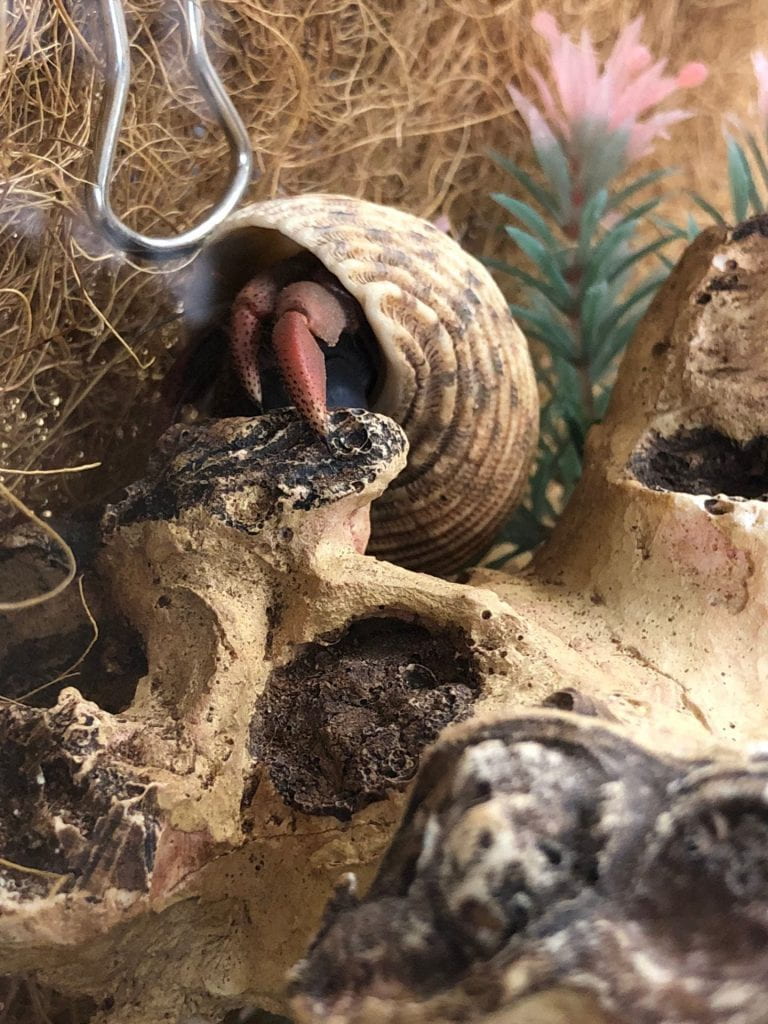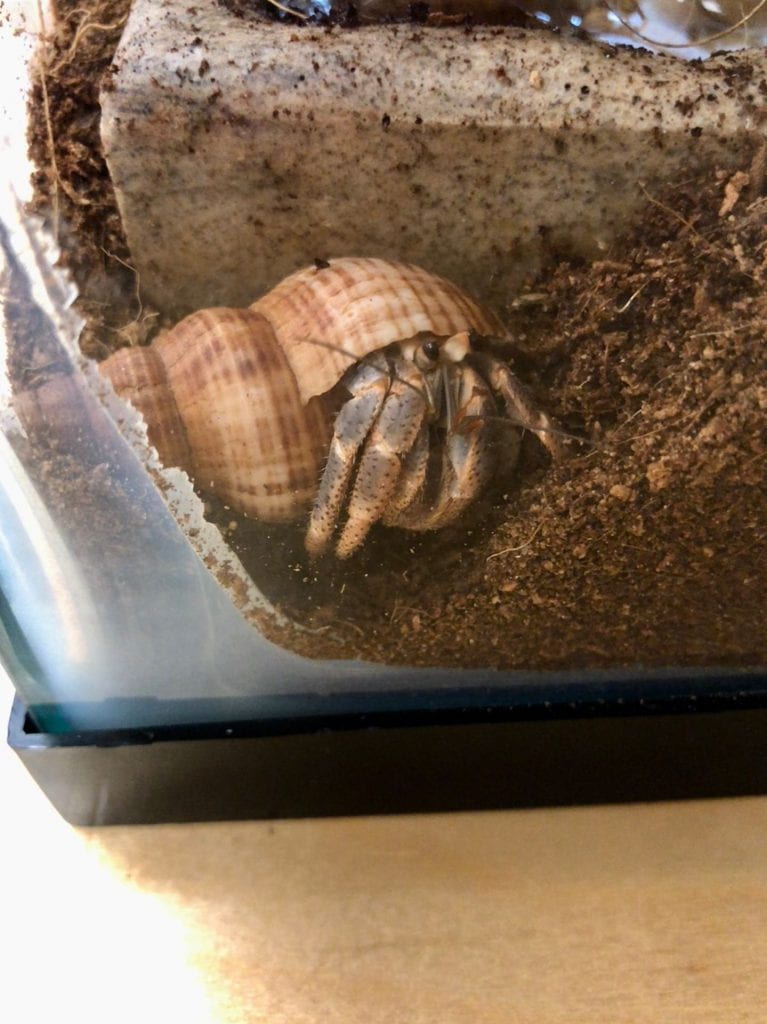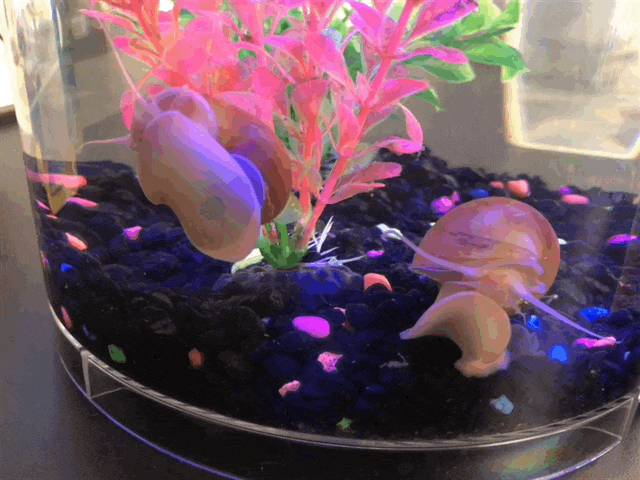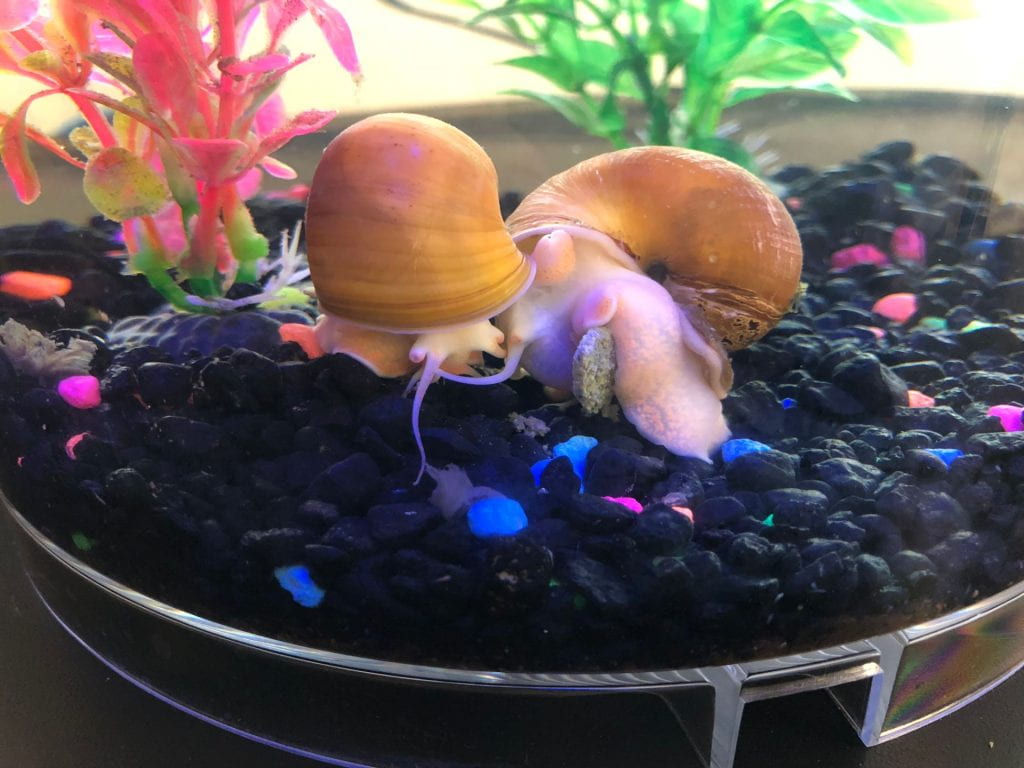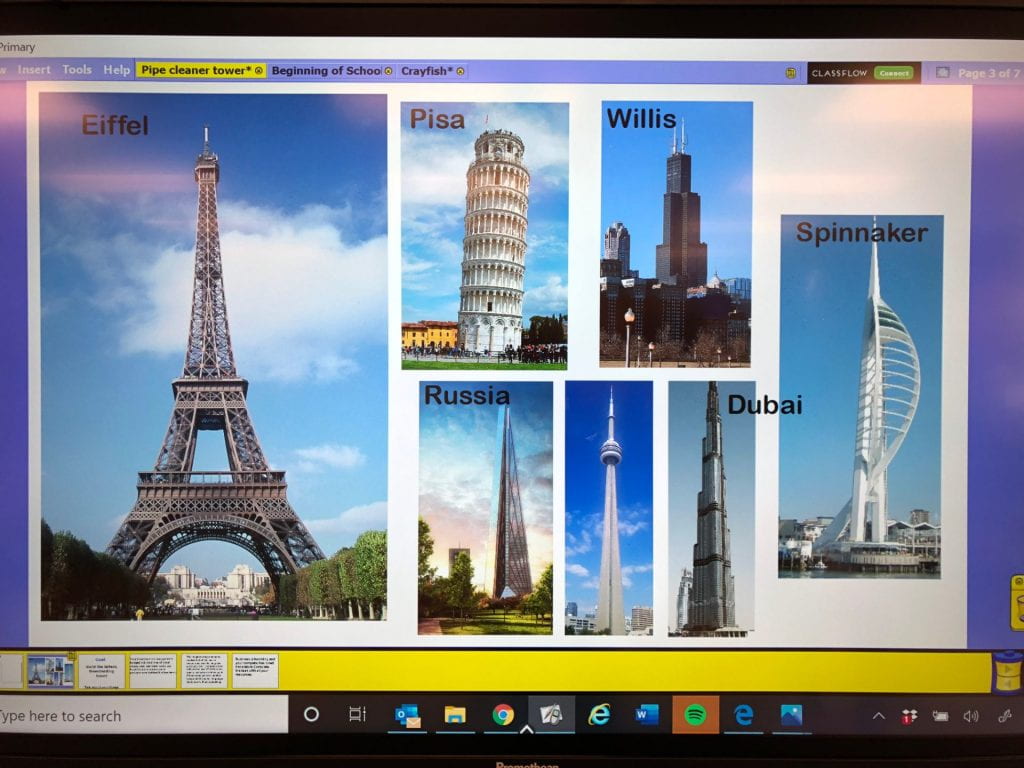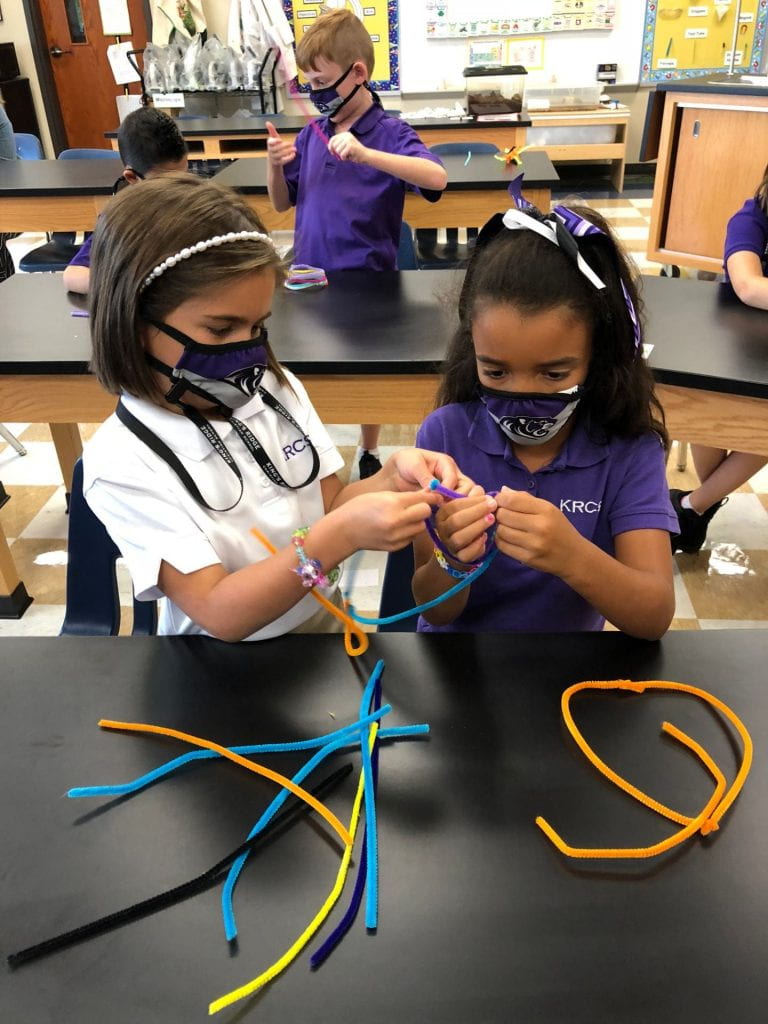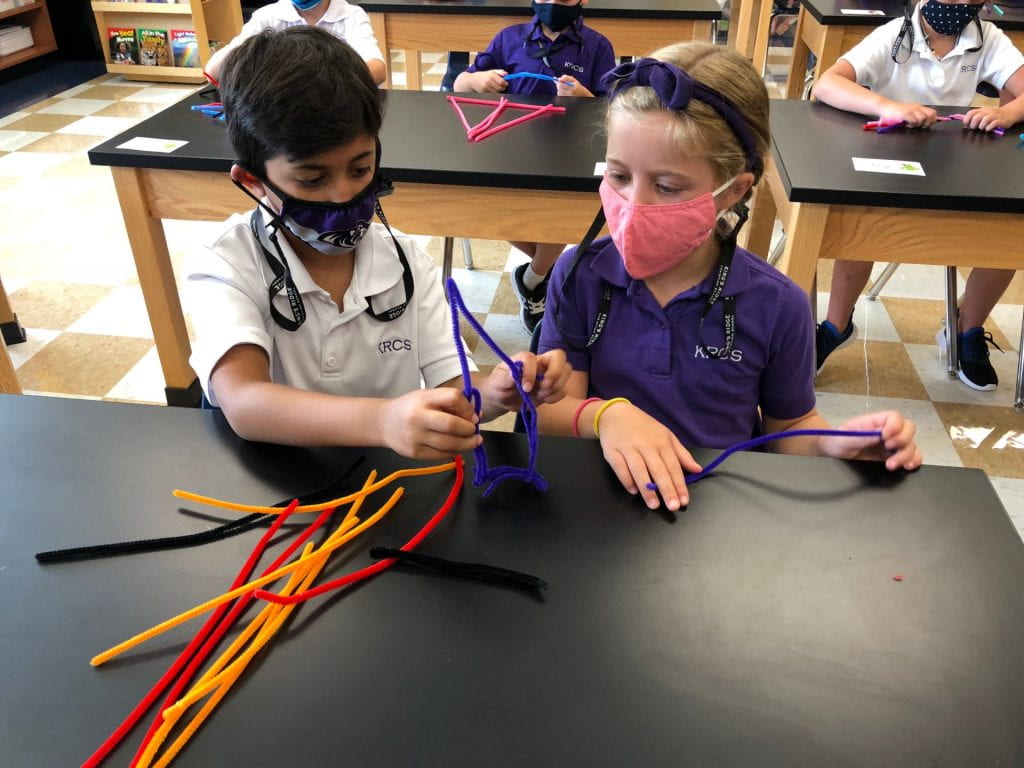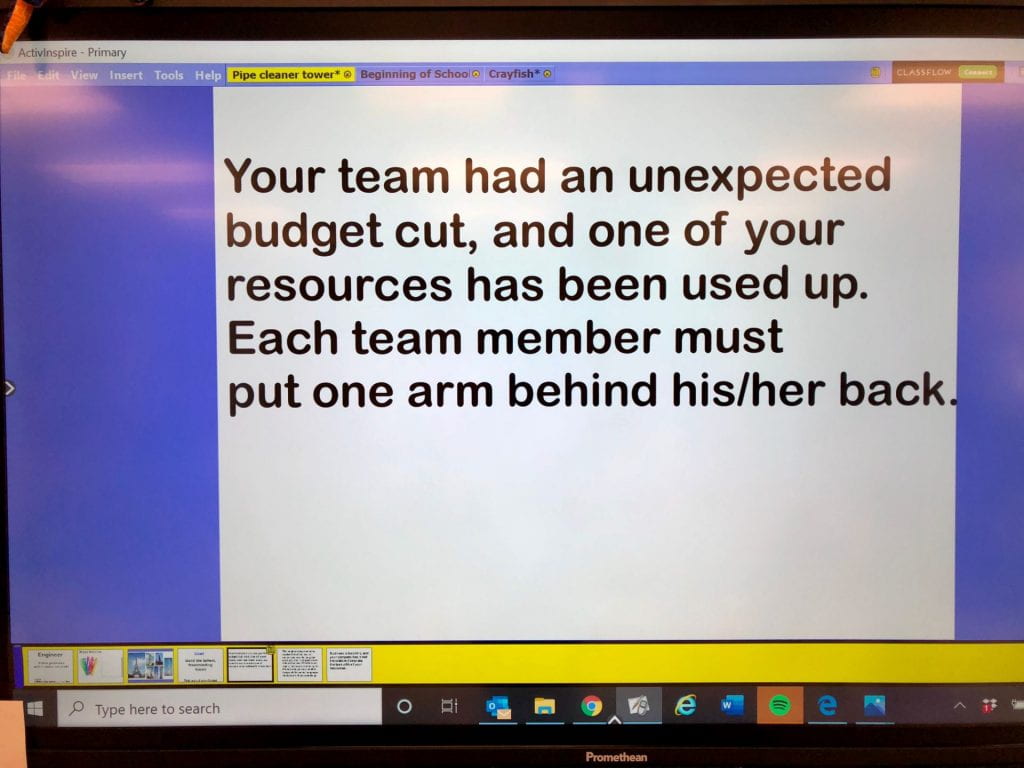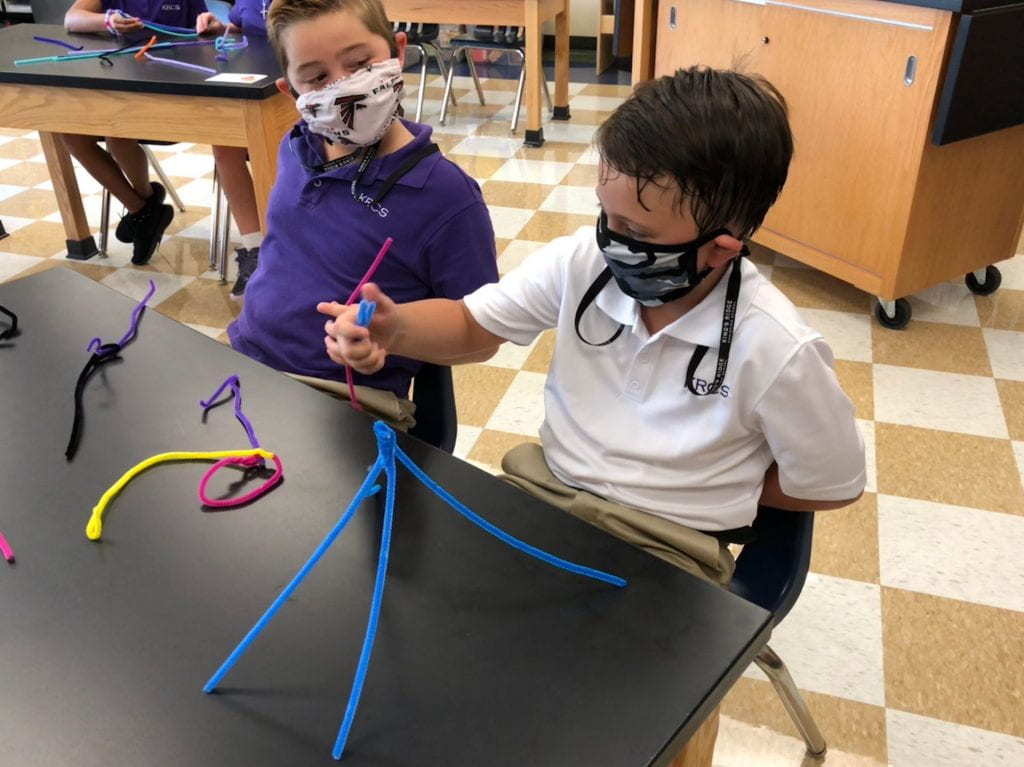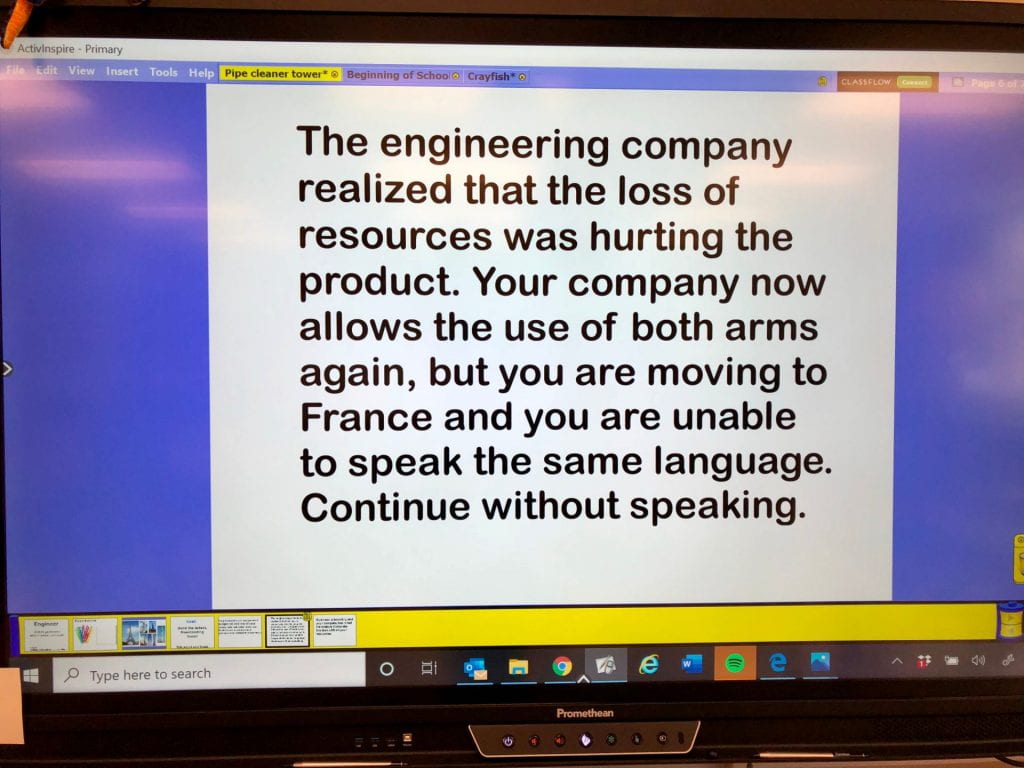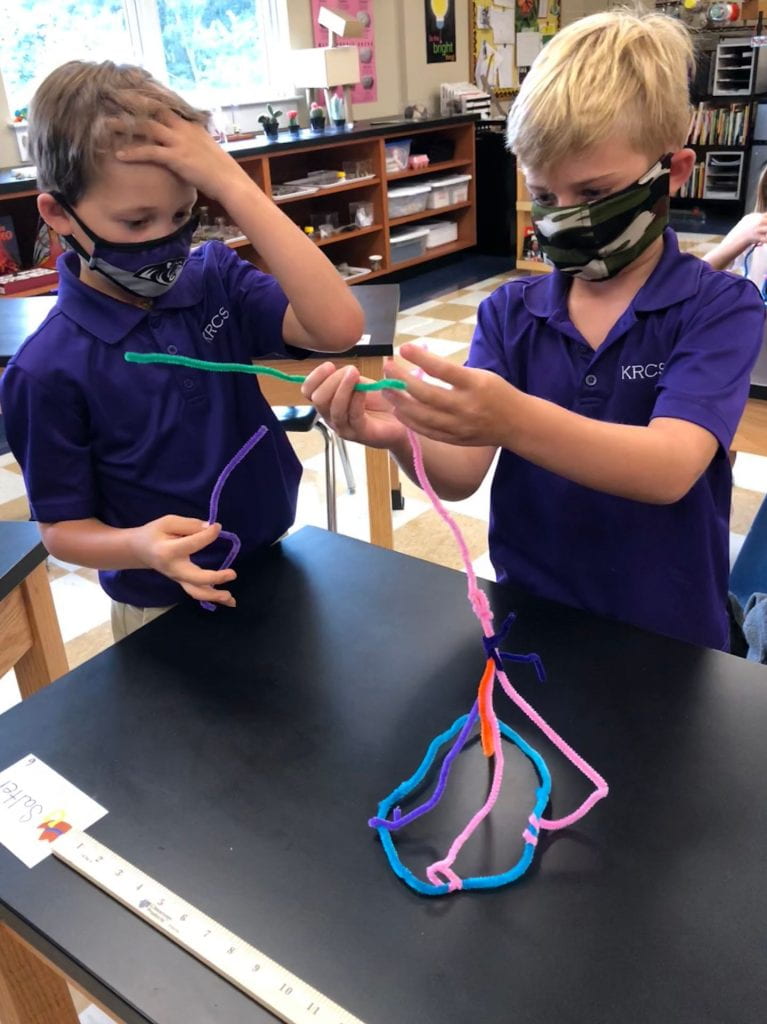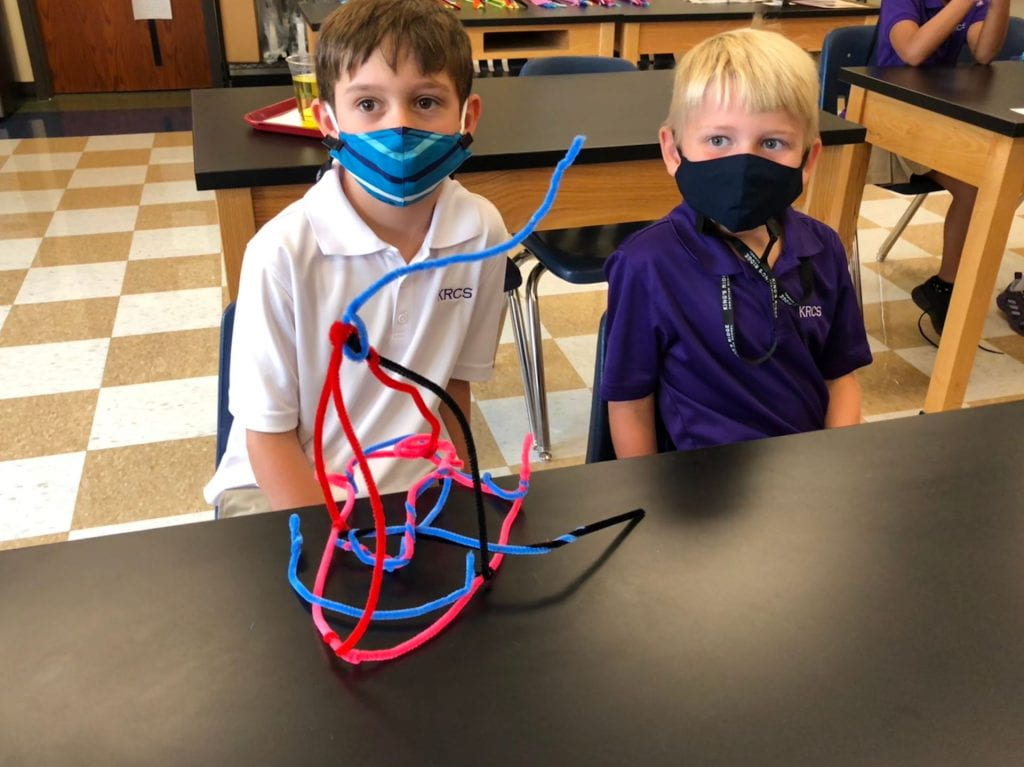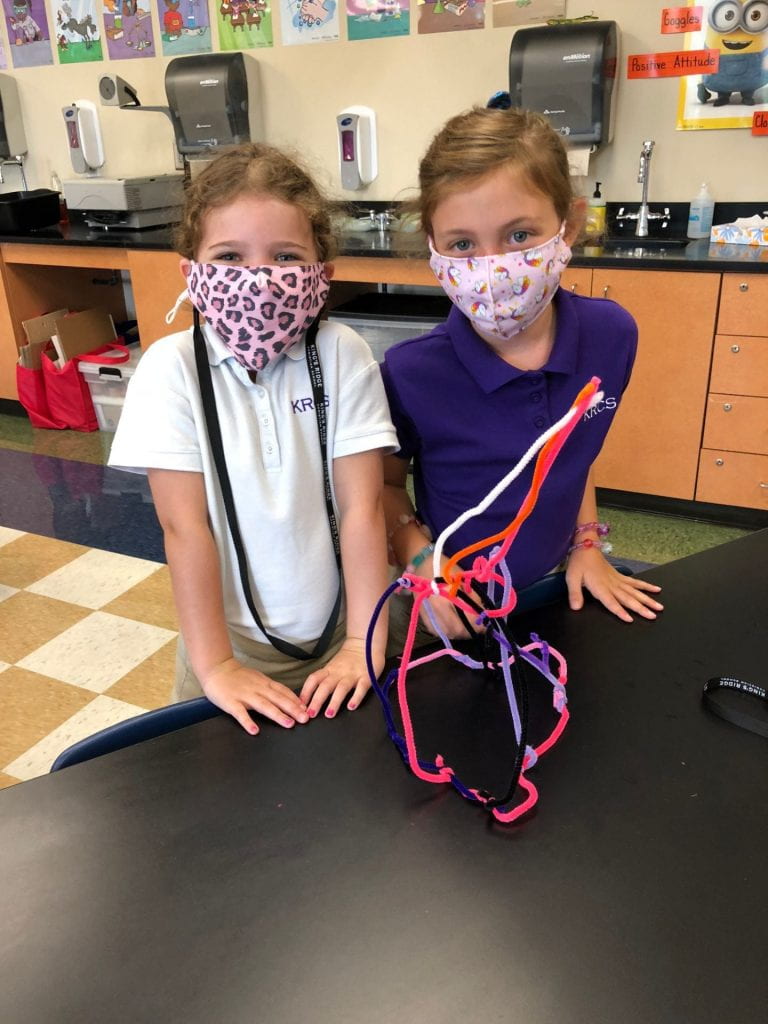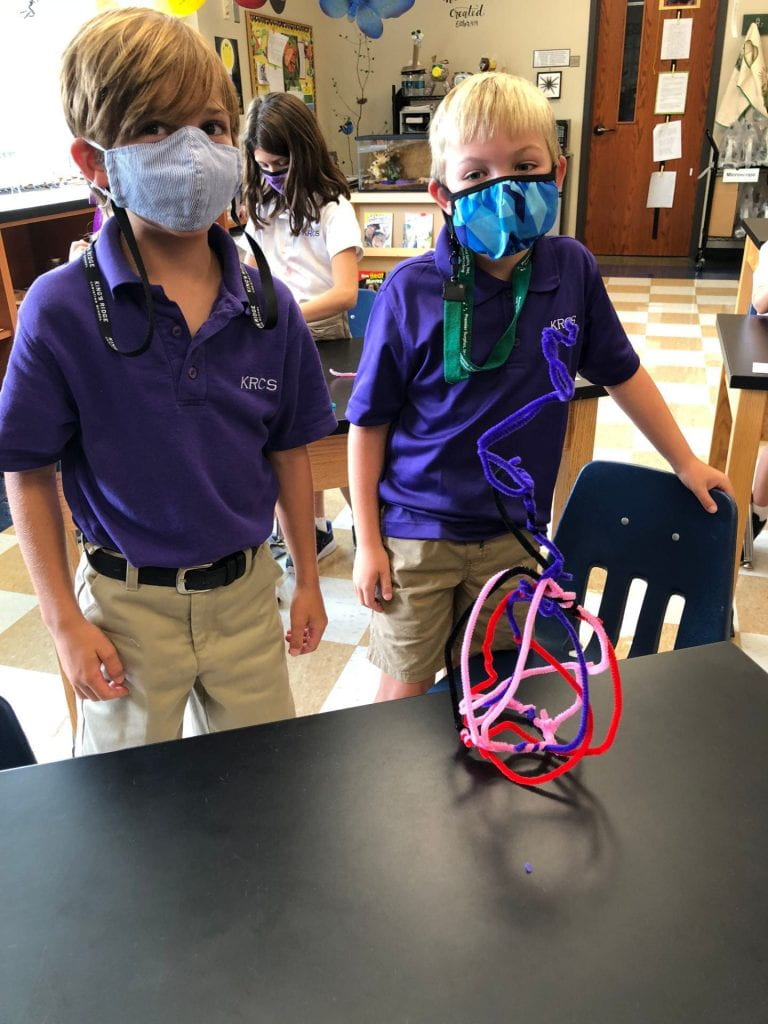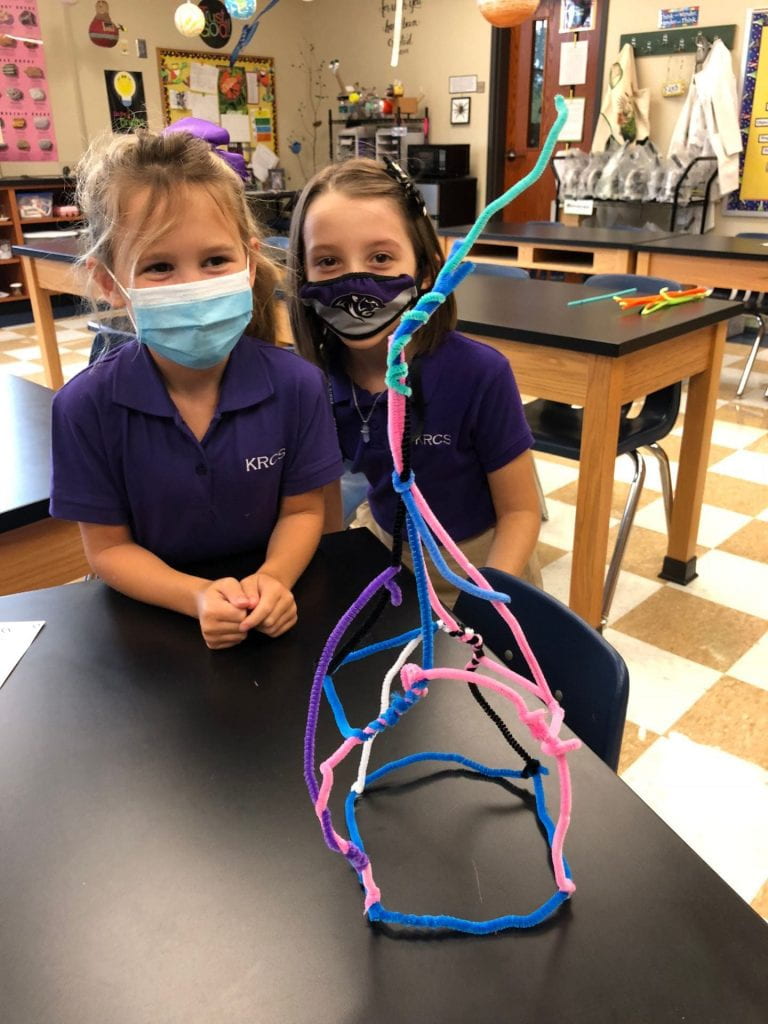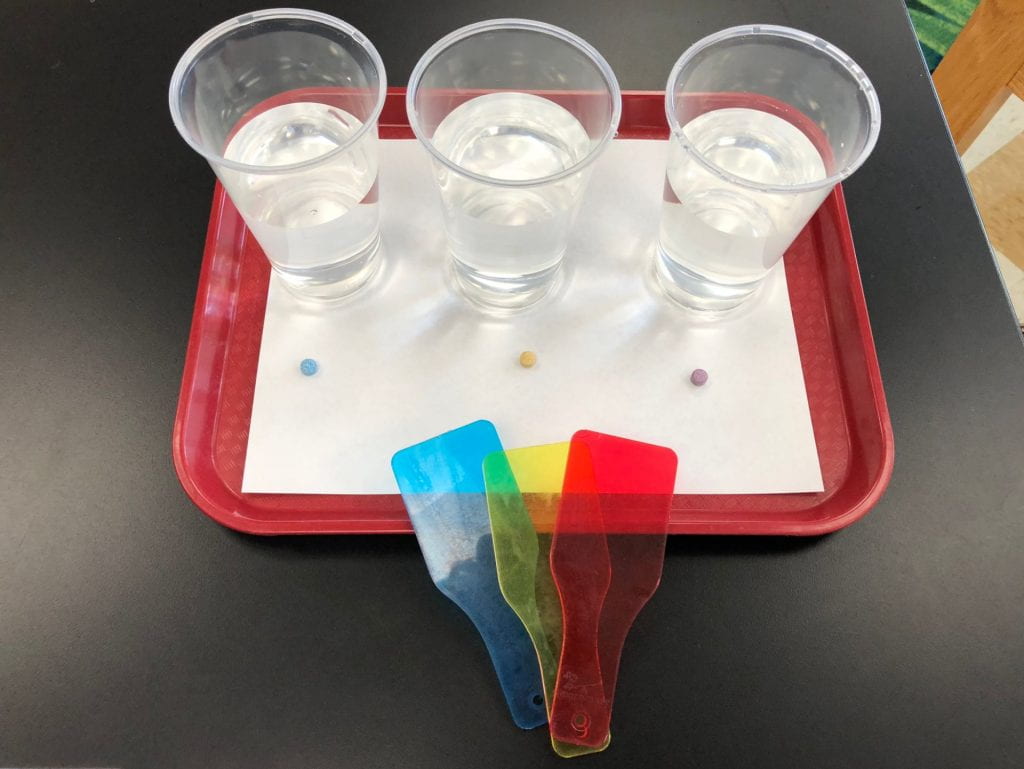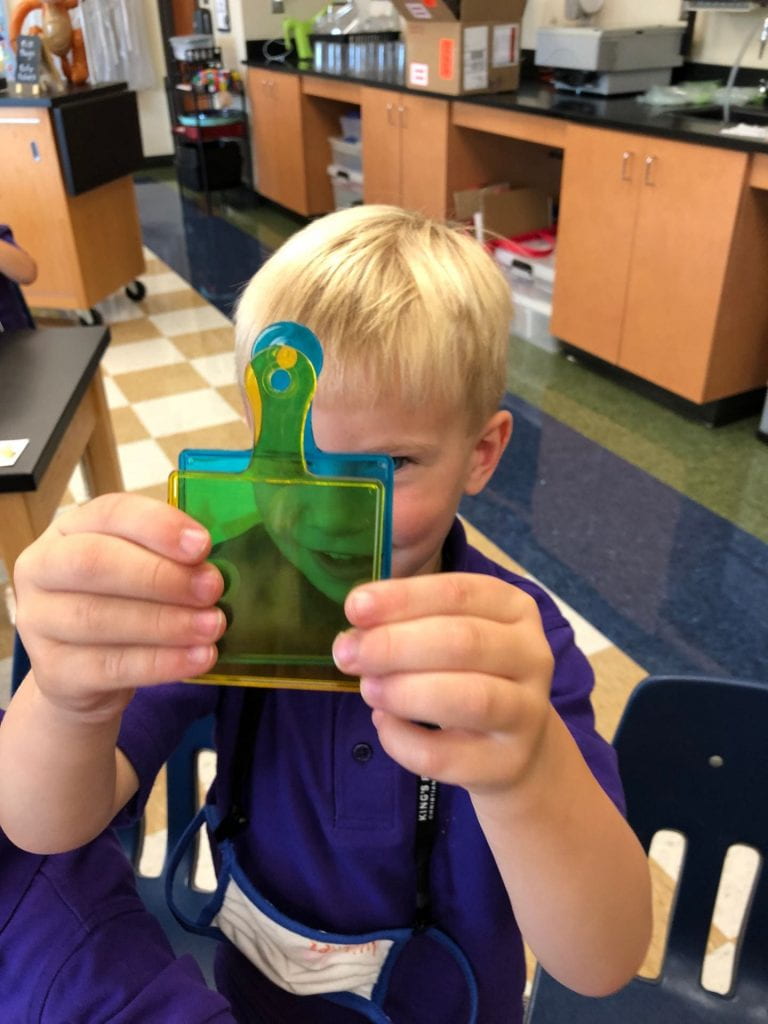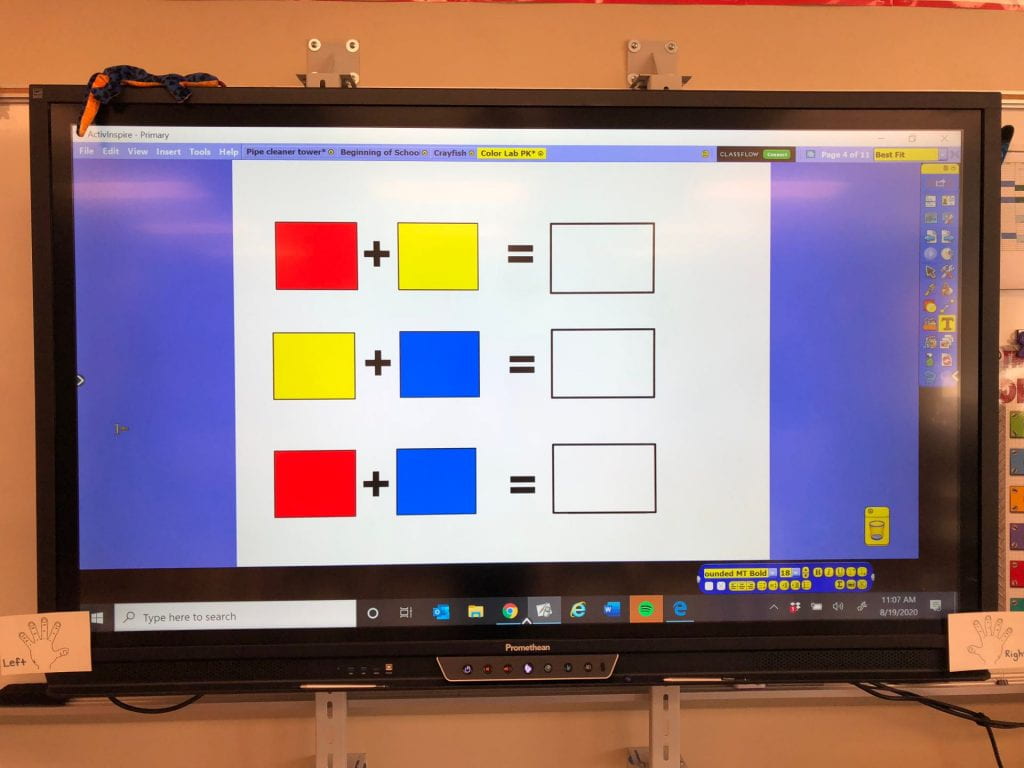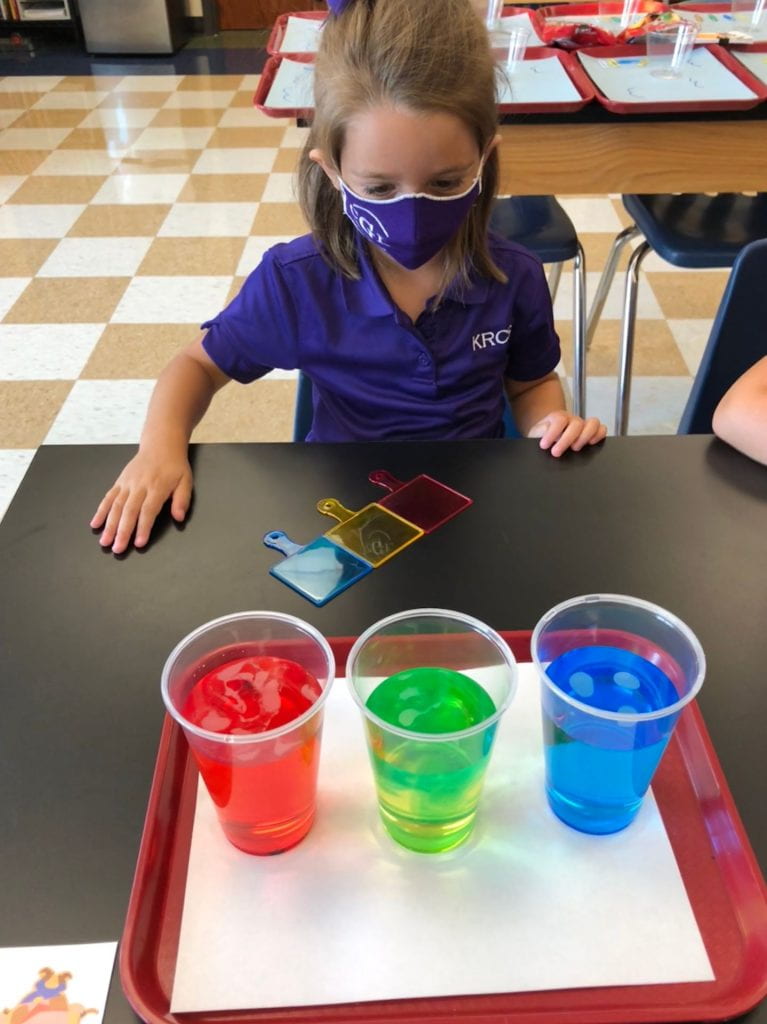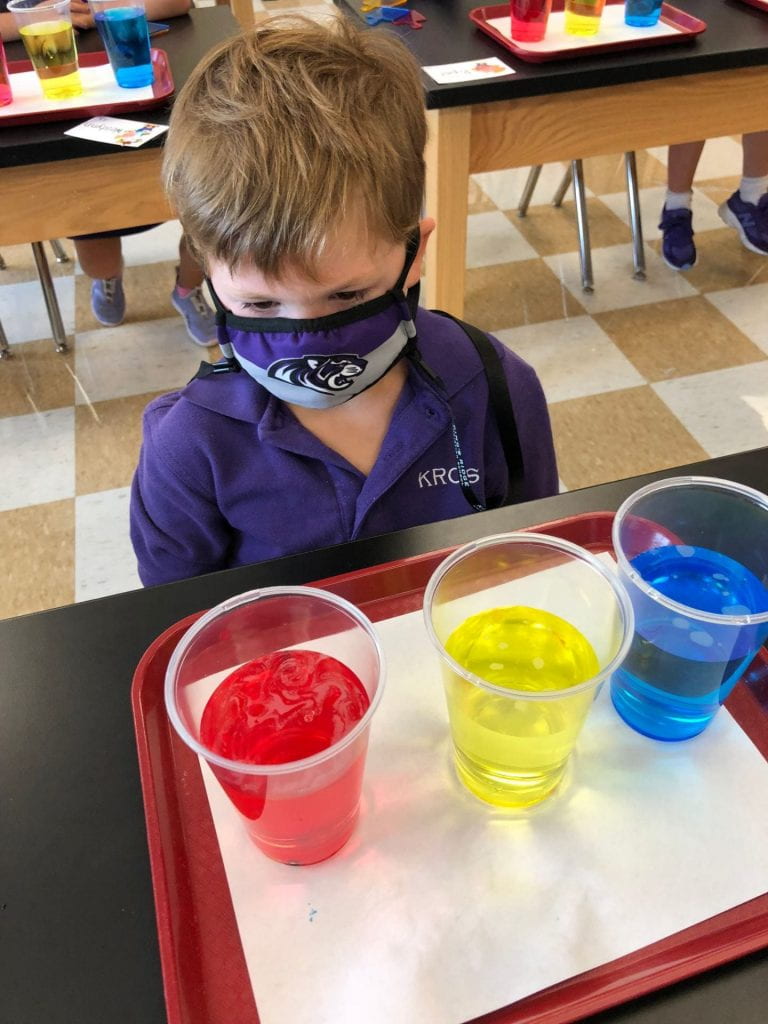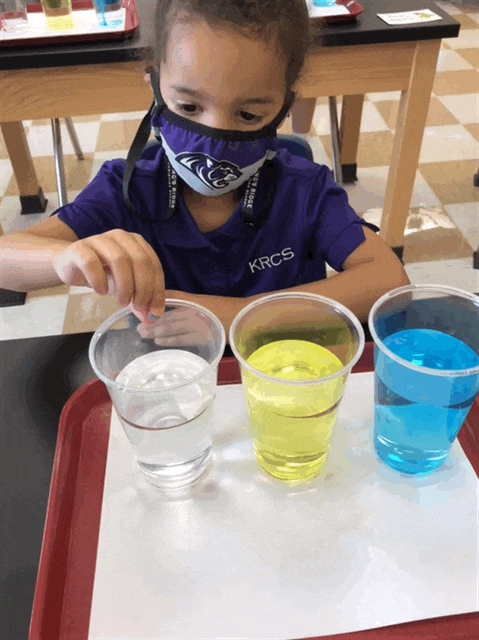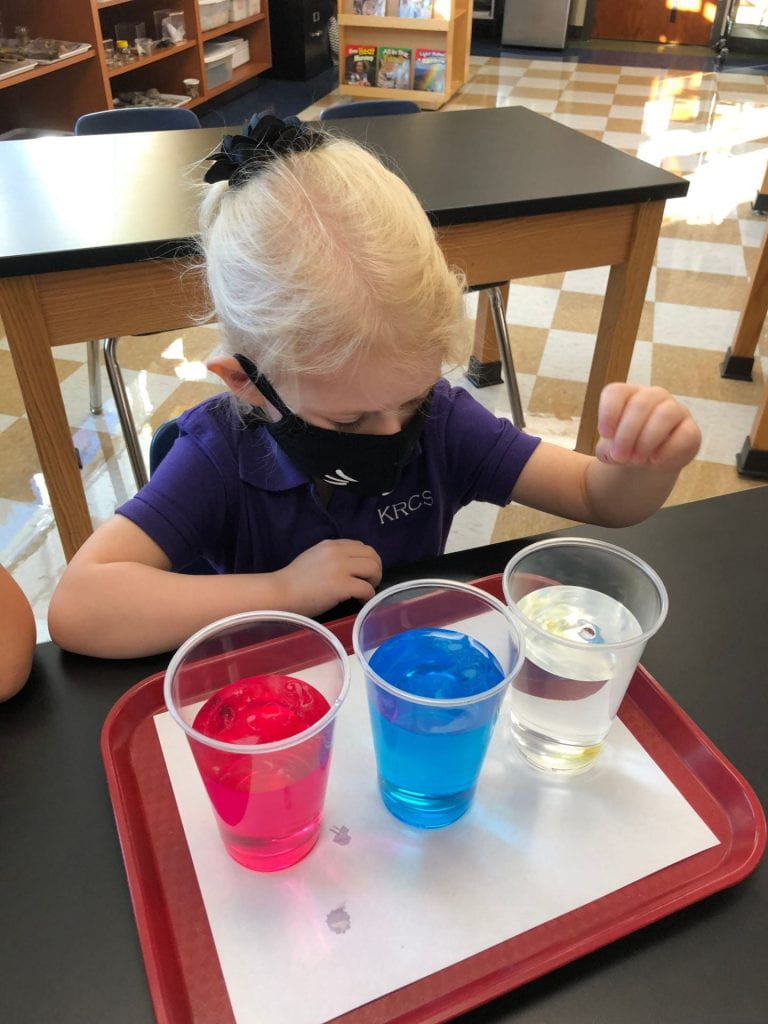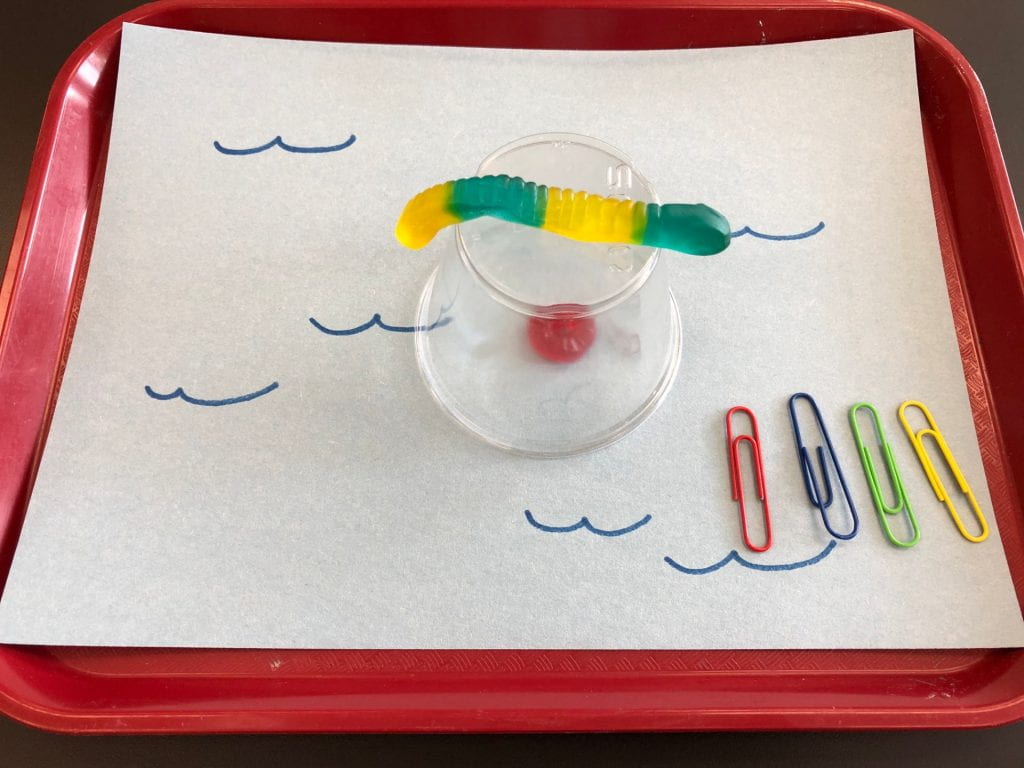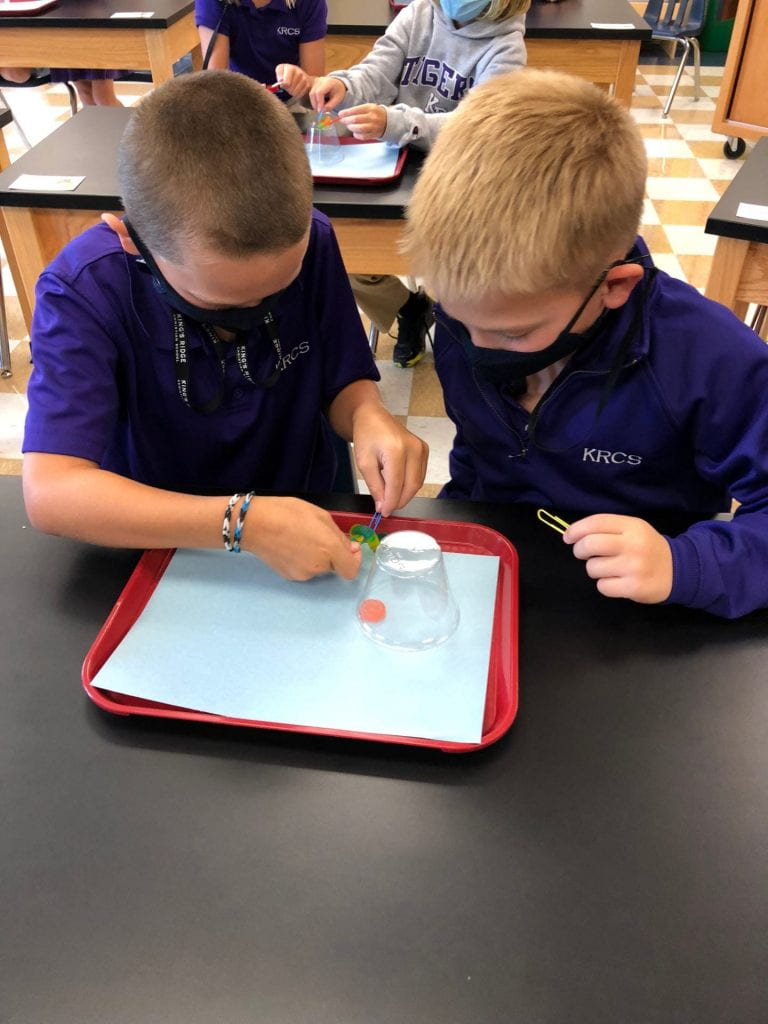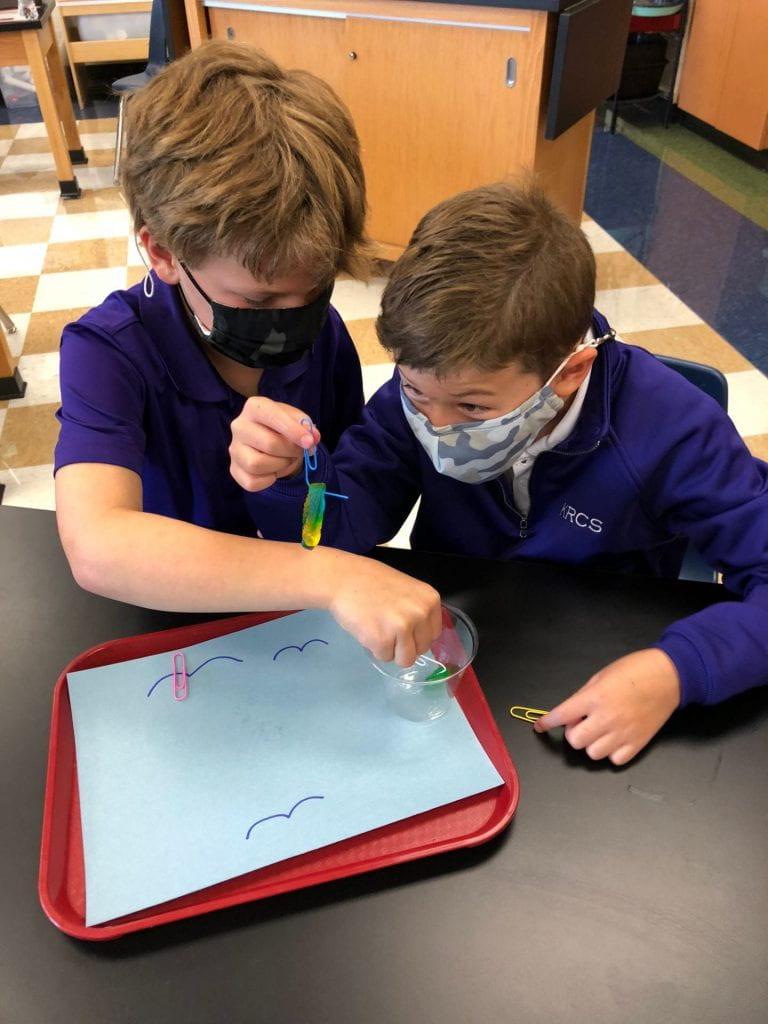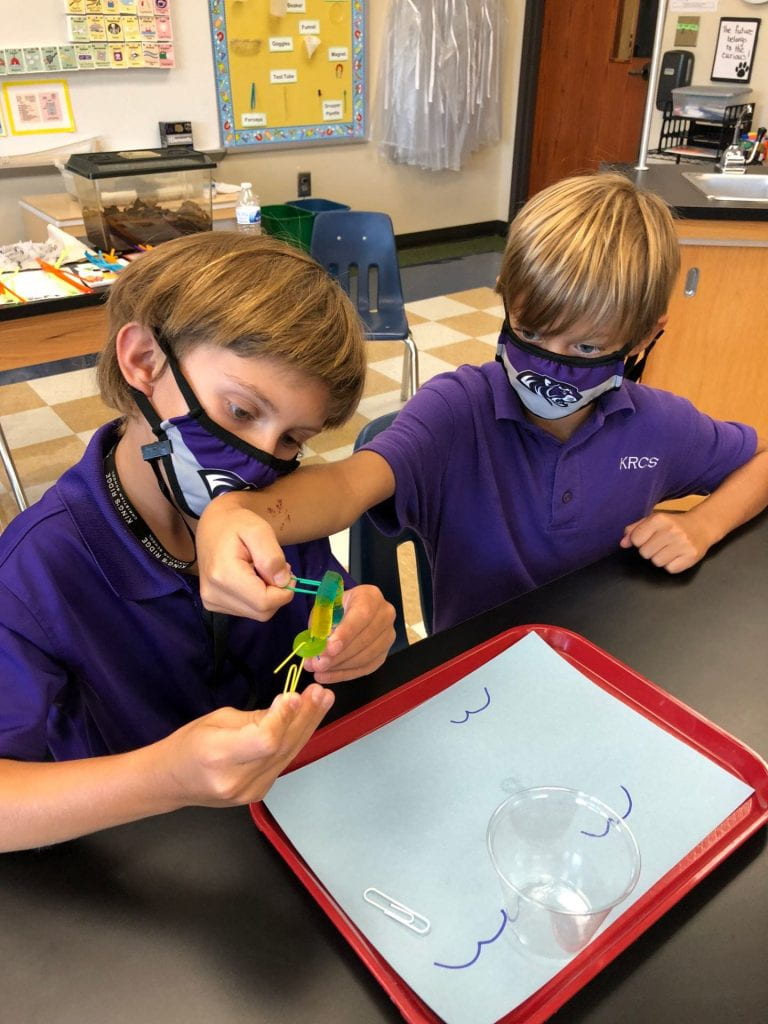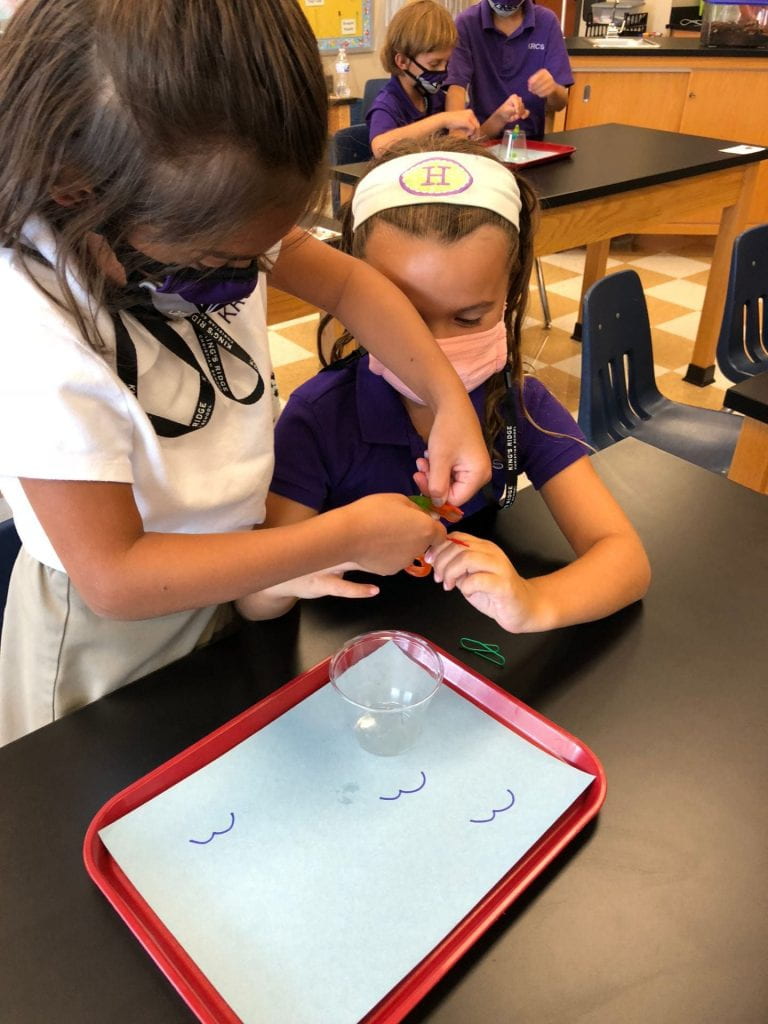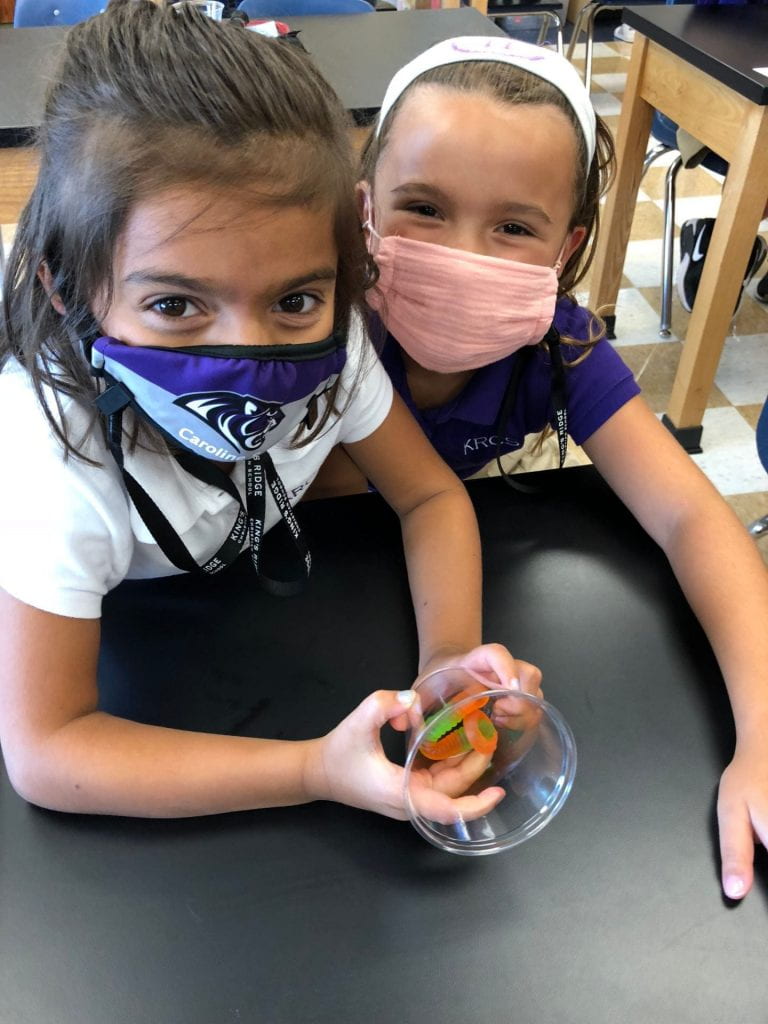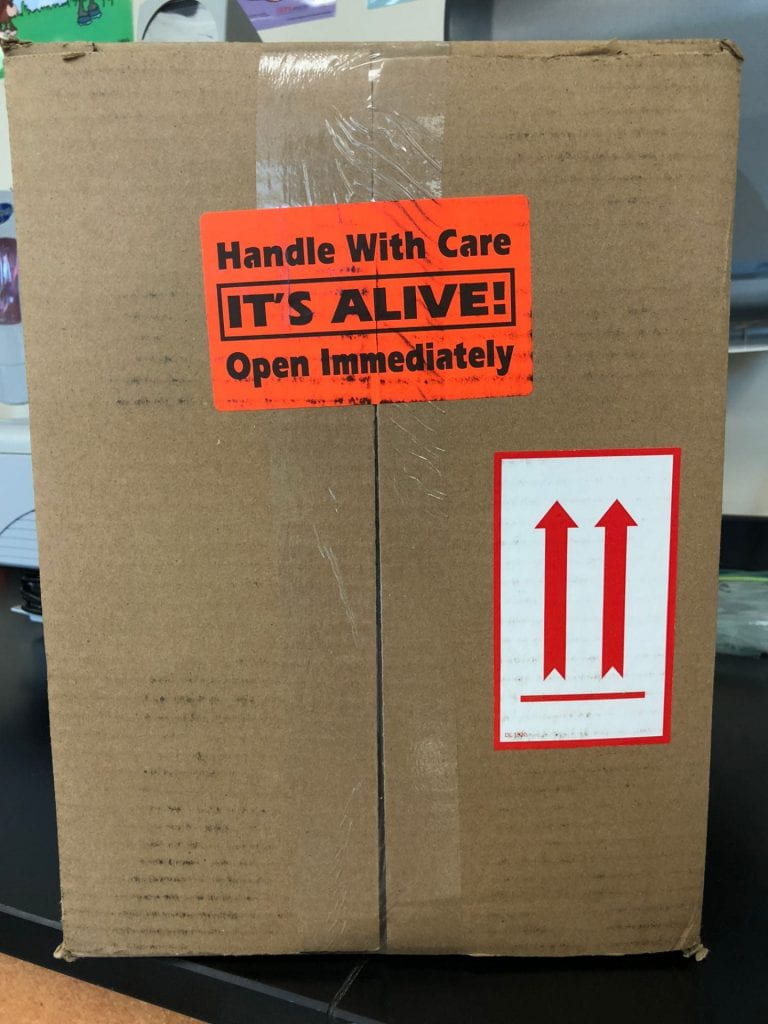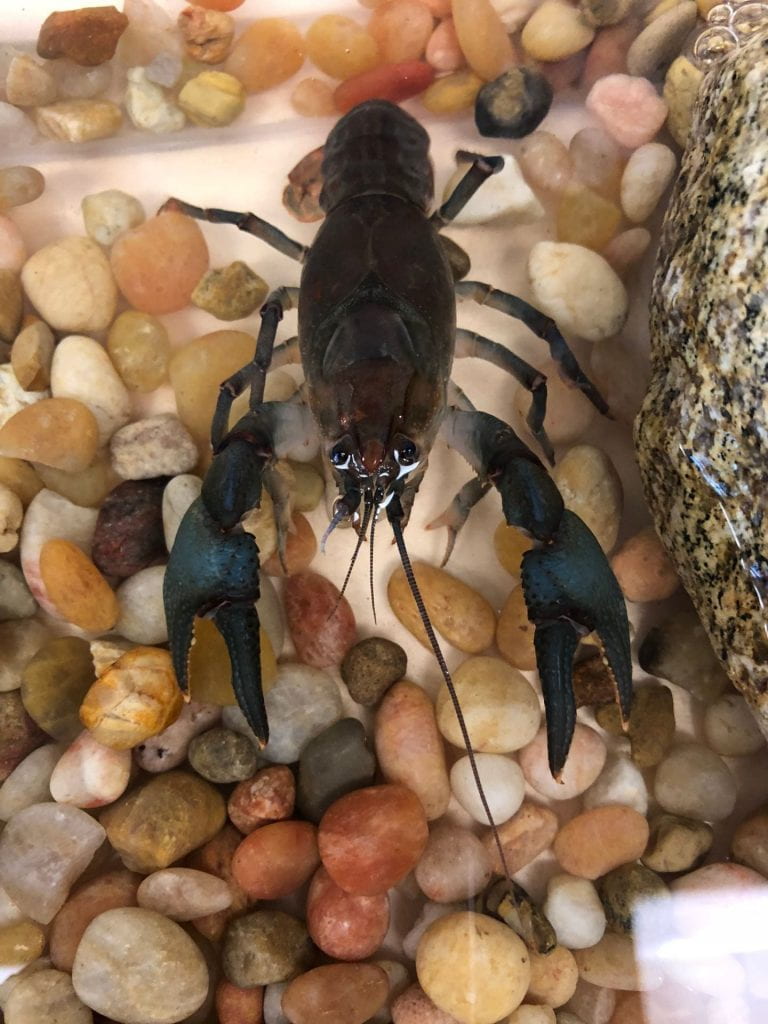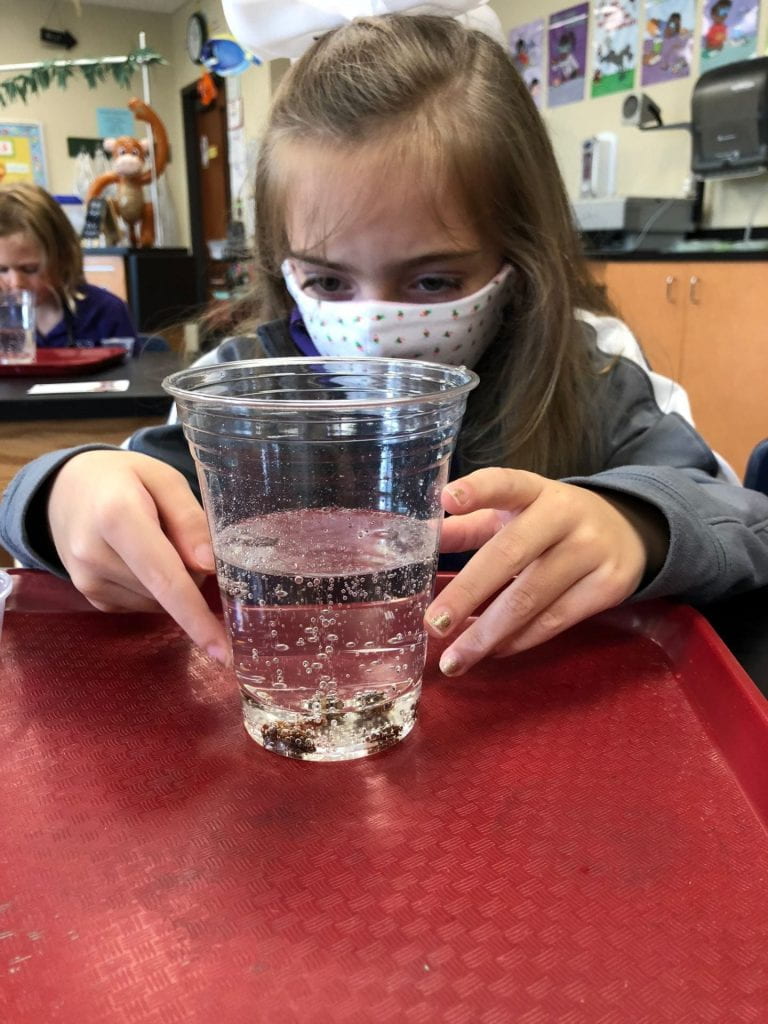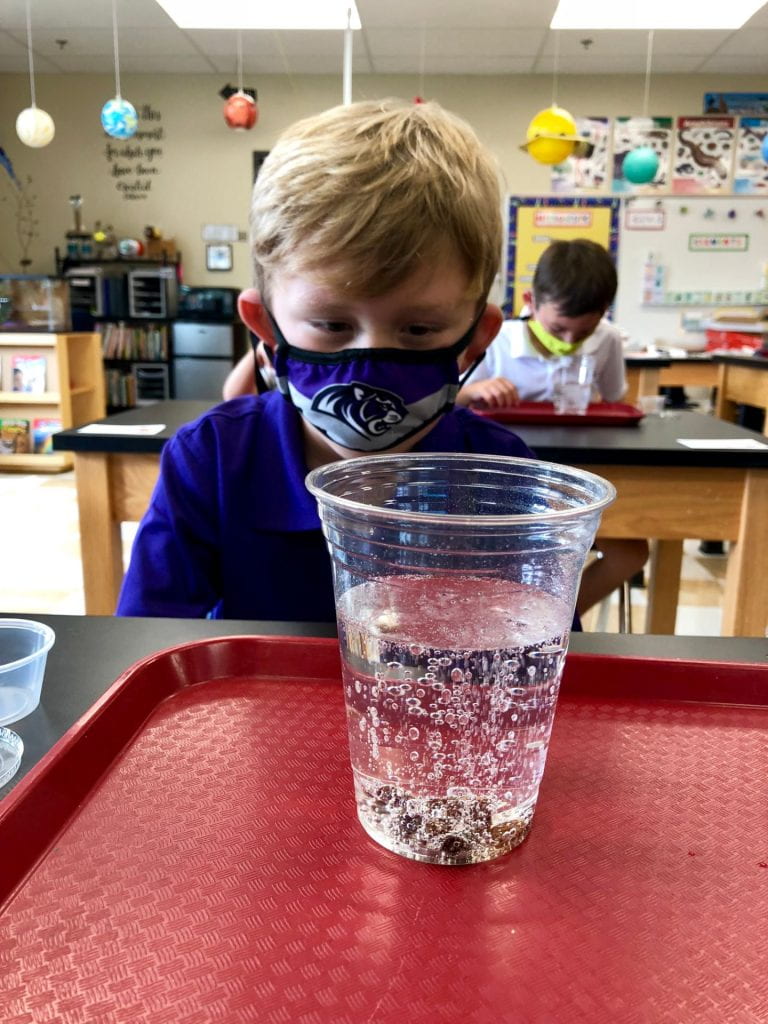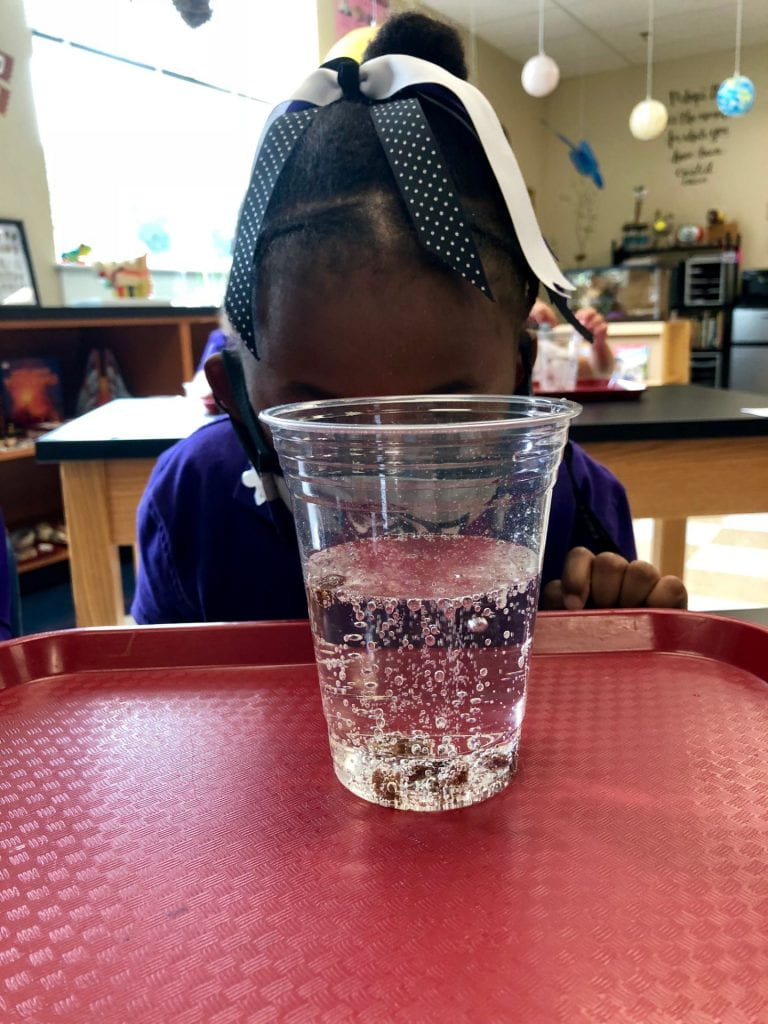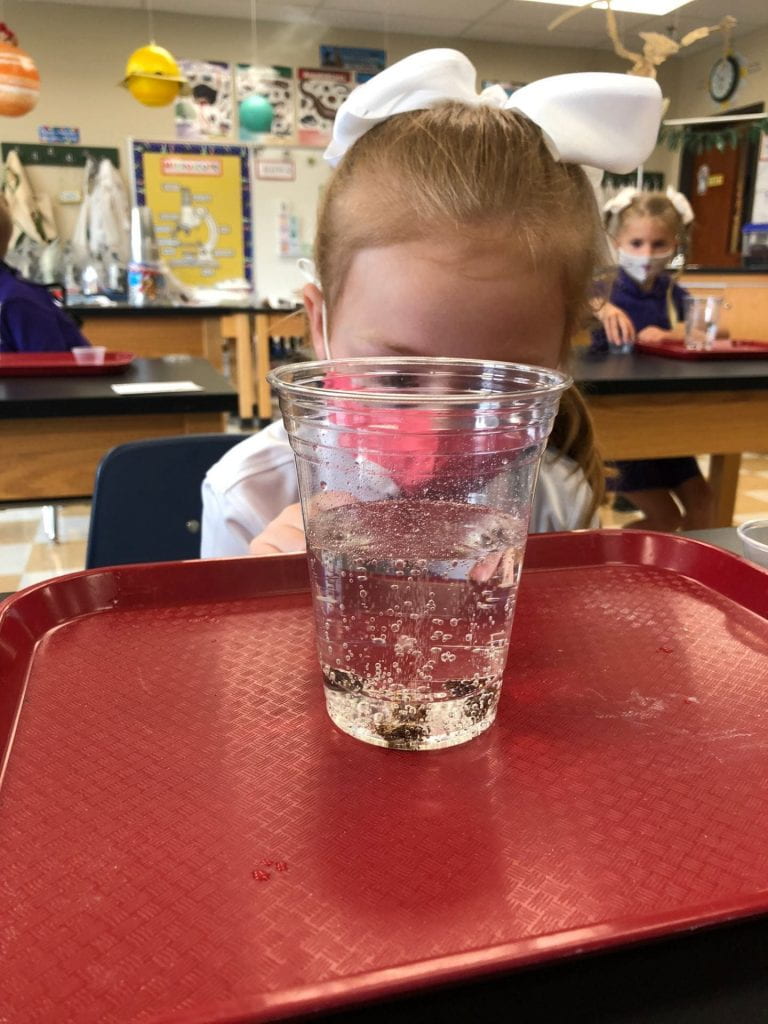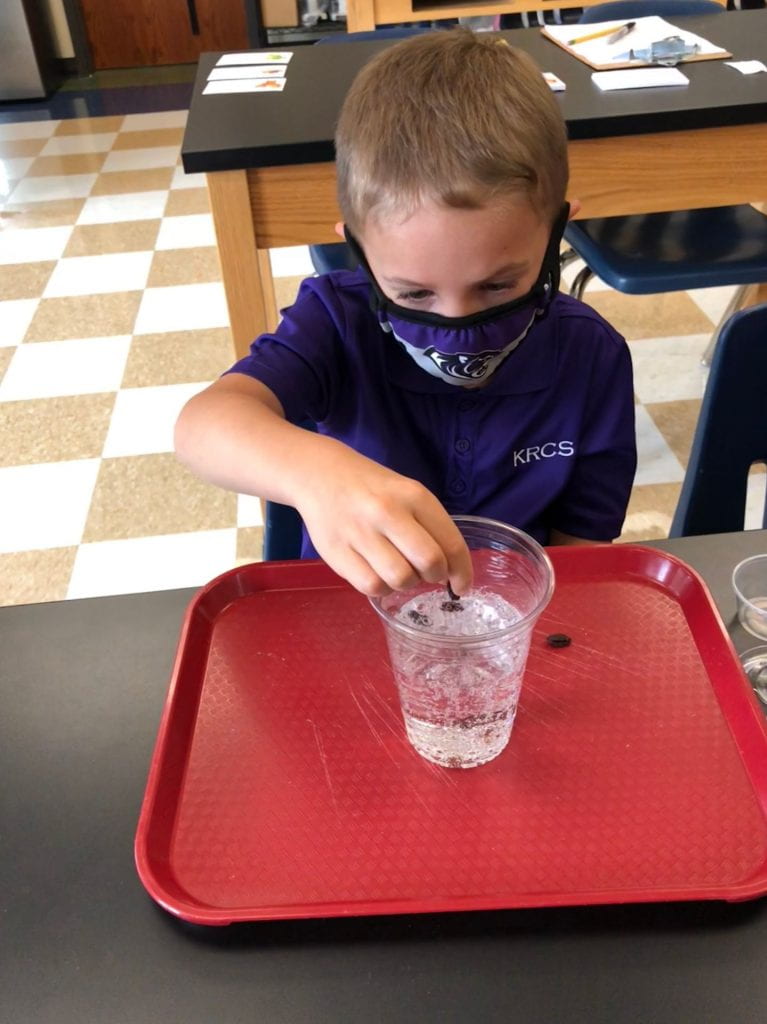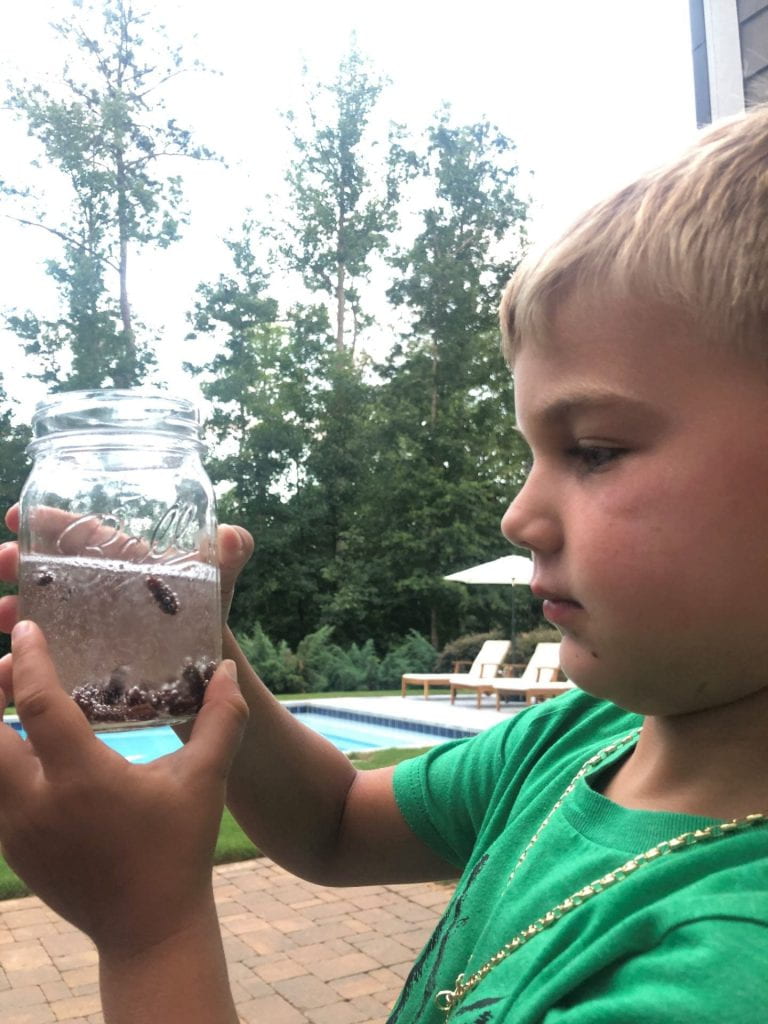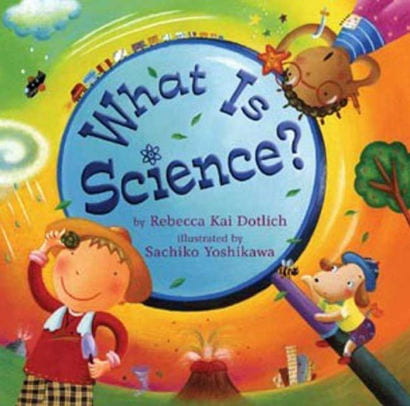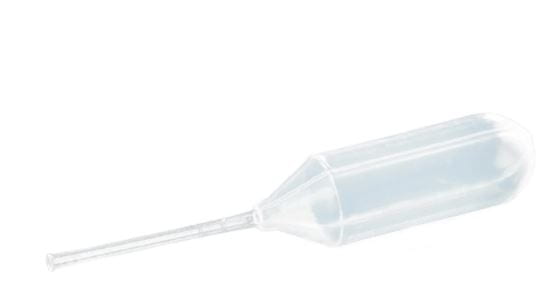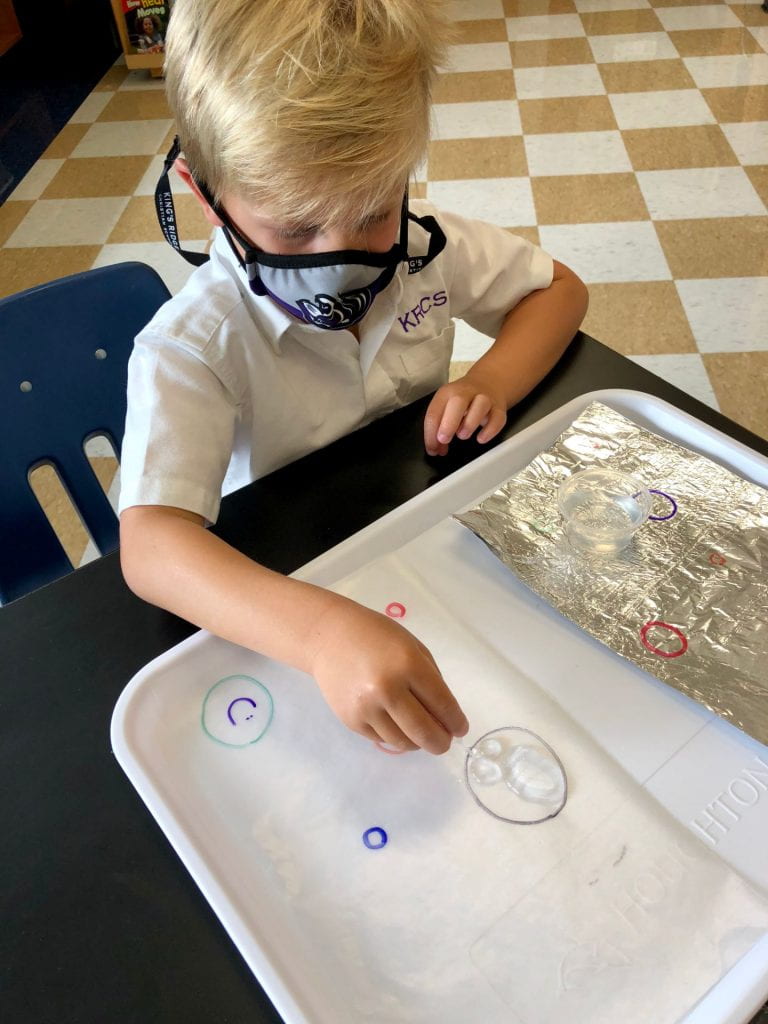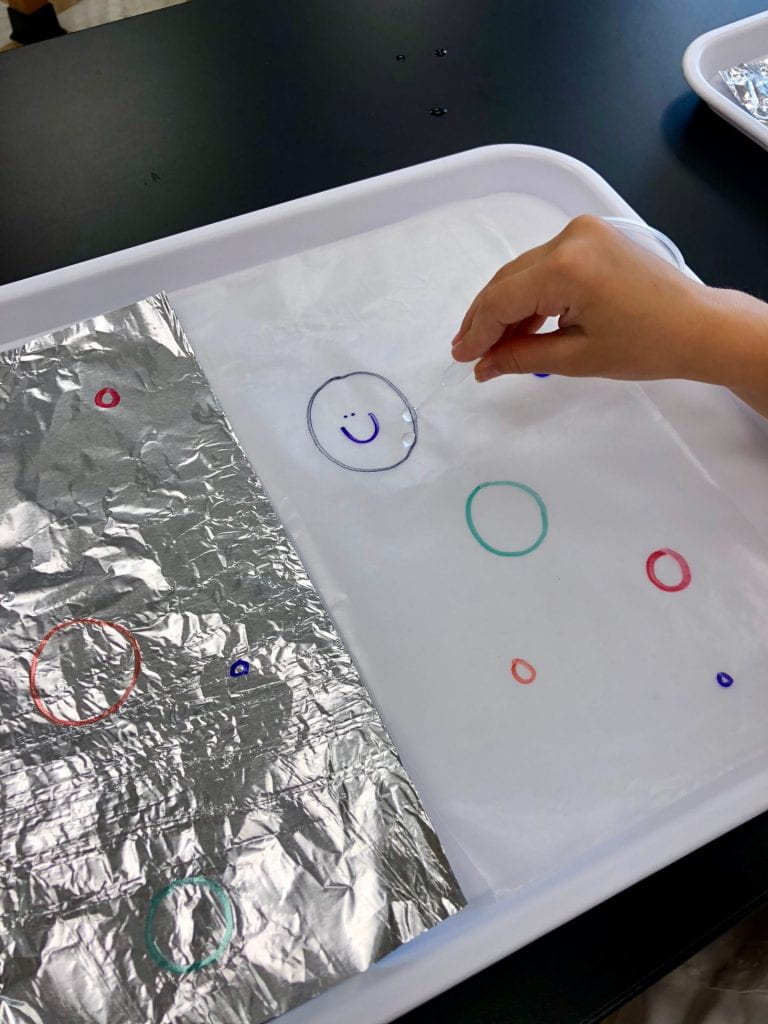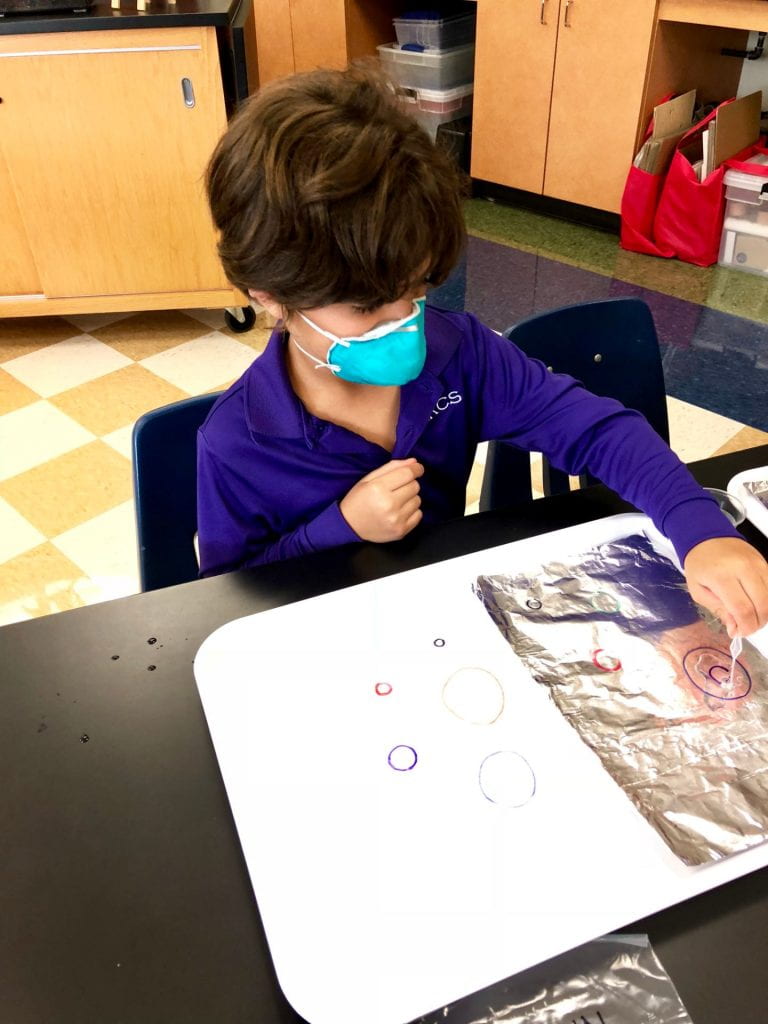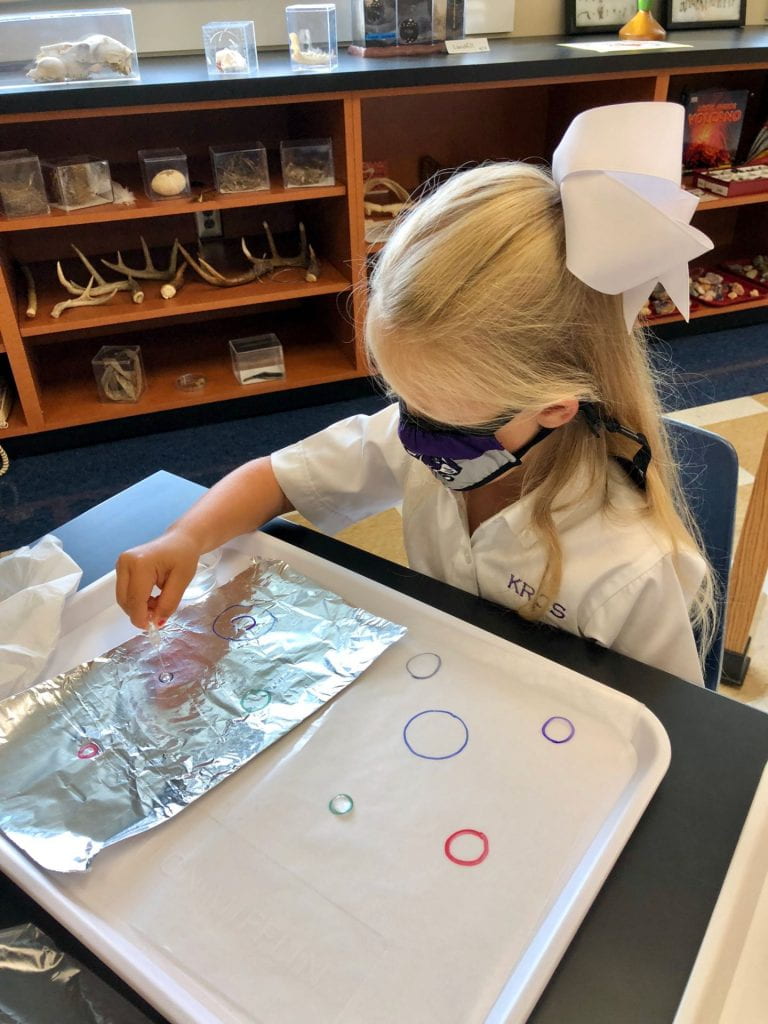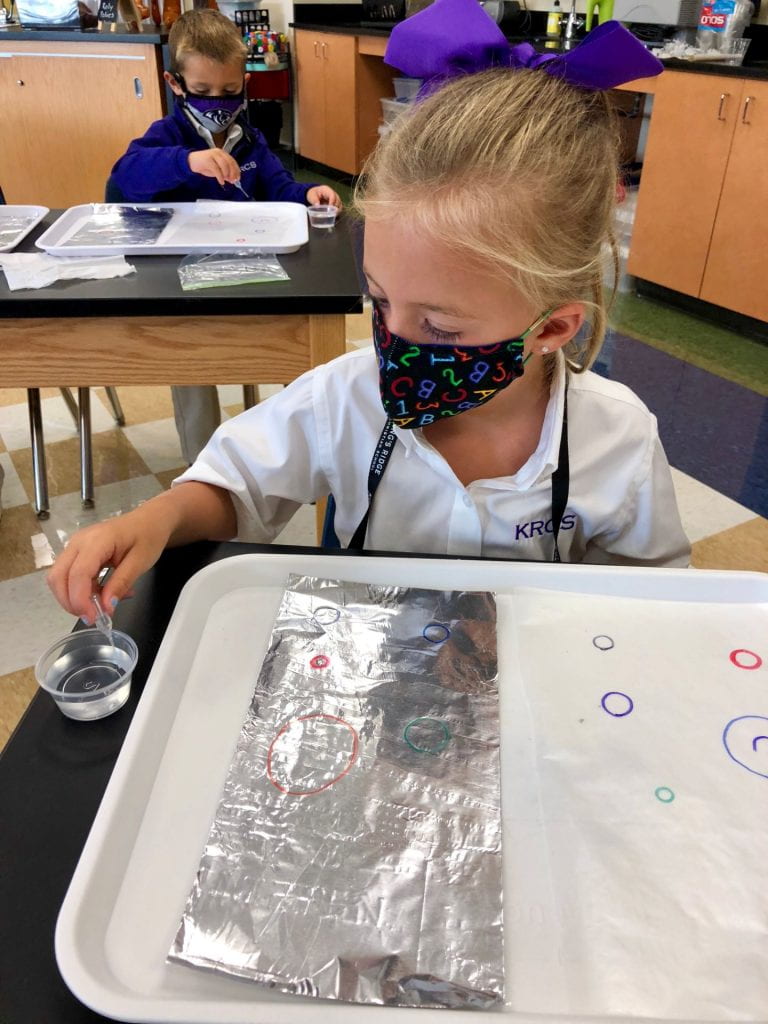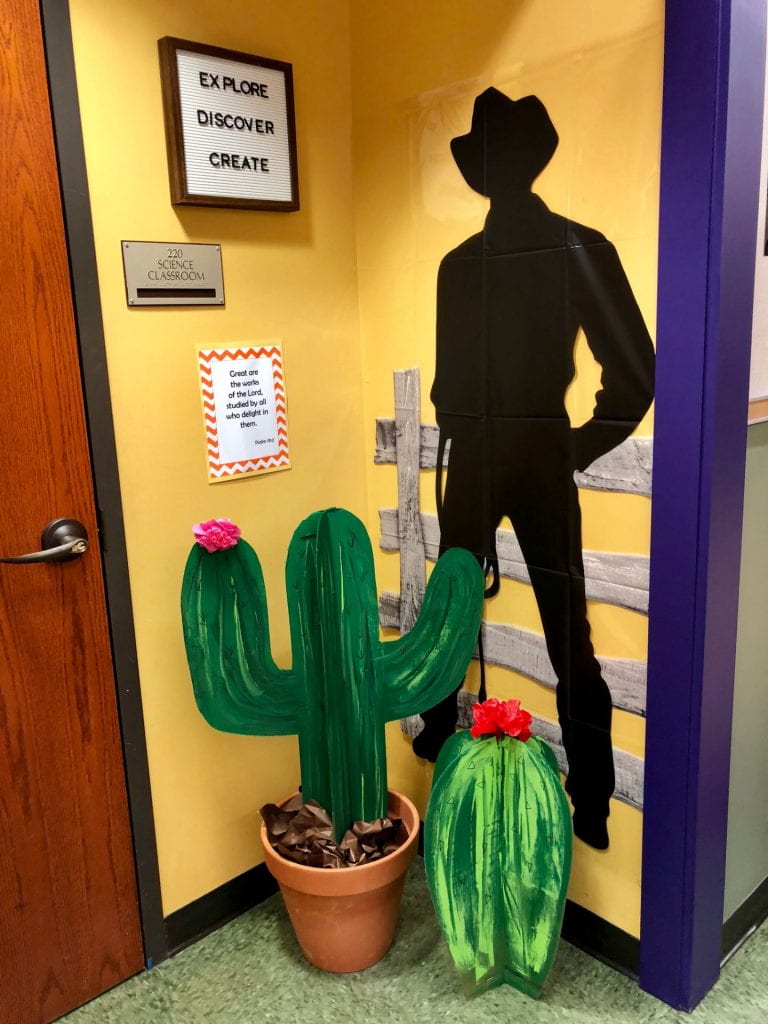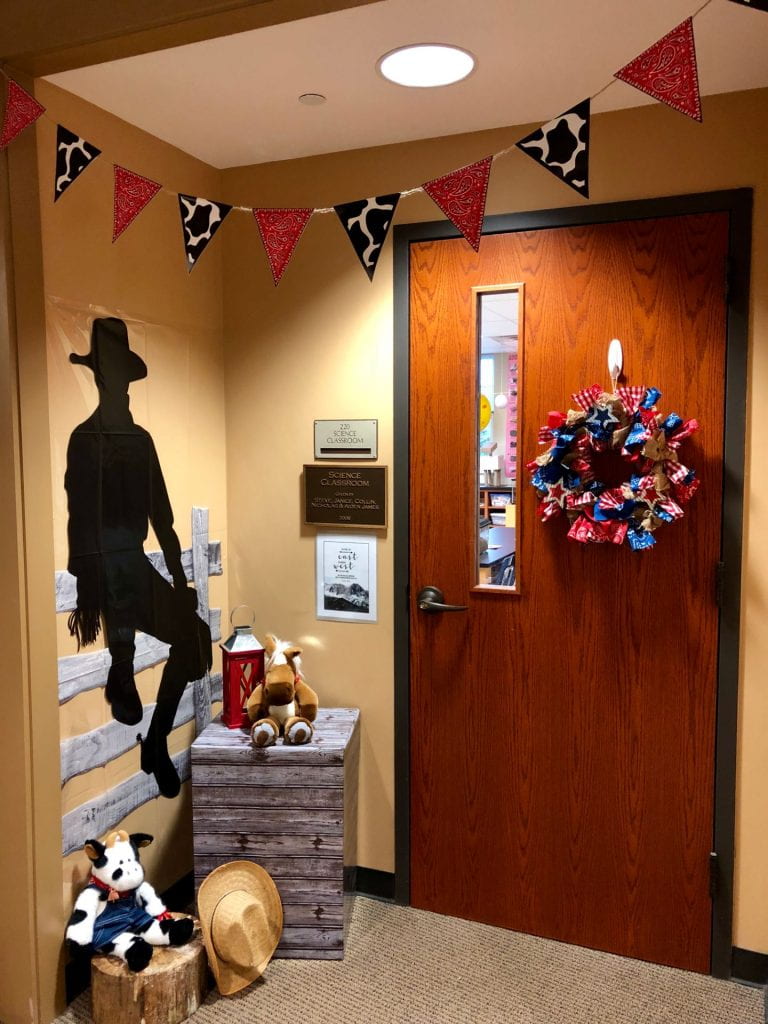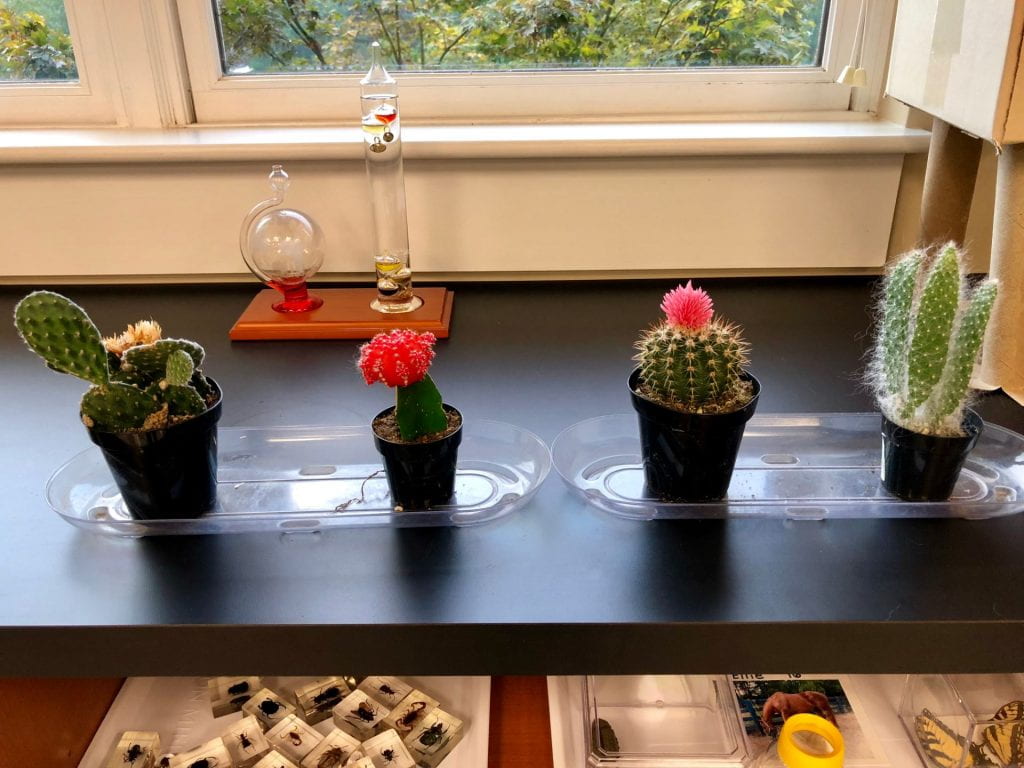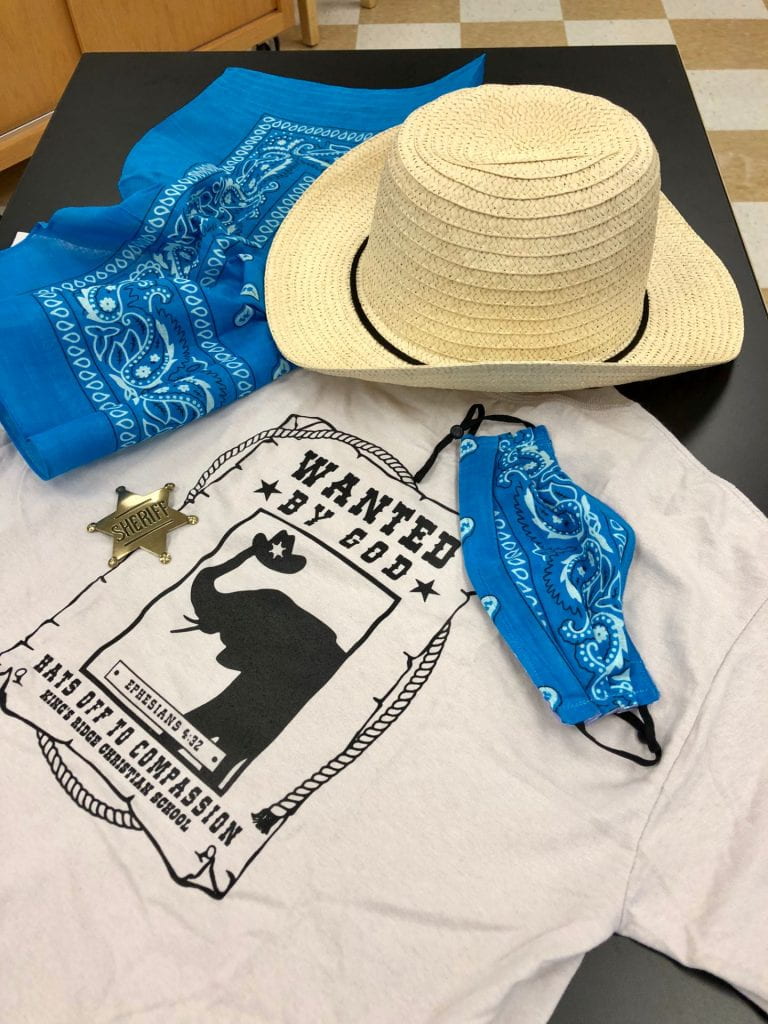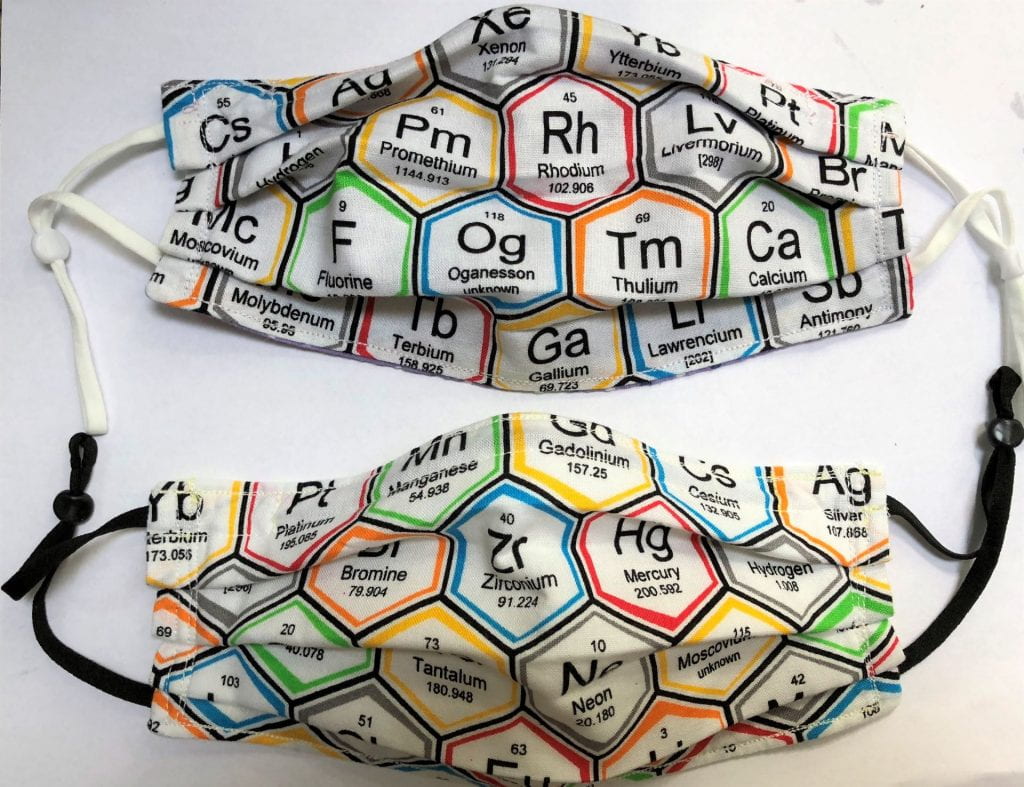STEM Challenge
Second grade engineers were tasked with building the tallest possible, freestanding tower with 15 pipe cleaners. Before they began work, we looked at towers around the world and discussed decisions that they would need to consider while planning. After collaborating with their engineer team, they began work.
But wait, we received an announcement from headquarters. Wow, this made our work much more difficult!
We were relieved to receive this communication, but now it was tough to collaborate.
After this final note, we completed our towers. This was not an easy assignment!
These engineers constructed the tallest tower. They used some solid shapes (cube and pyramid) in their design.
This activity came from Vivifystem.
COLOR
Color is a physical property and PreK chemists begin the year with a unit about color. In lab, we used color paddles to investigate how the primary colors (red, yellow, and blue) mix to create orange, purple, and green. Click here to watch a fun color mixing song.
We placed red, yellow, and blue color fizzers into cups of water. To make the secondary colors, we added one more color to each cup. Color fizzers are great because they do not stain, like food coloring.
This would be a fun time to pull out paints and mix colors at home.
Help Save Fred!
Third grade scientists began the year with a STEM activity that focused on collaboration and problem solving.
Click here to watch the short video that introduces Fred’s problem.
Goal:
Turn the boat right side up. Put the life preserver on Fred and place him back in the boat.
Rules:
You may only touch the paperclips – not Fred, the boat, or the life preserver.
Don’t let Fred fall into the lake or he will drown!
You can not injure Fred. For example, you cannot pierce him with the paperclip.
As students worked, they realized that bending the paperclips was not one of the constraints and that success required all four hands.
New Lab Animals
Dancing Raisins
First grade chemists reviewed why some objects float, while others sink. Then, I dropped some fresh raisins into tap water and we watched the raisins sink to the bottom of the glass because they were denser than the water. But what would the raisins do if we dropped them in seltzer water or Sprite? As I opened the bottles, we heard a fizzy sound and observed bubbles. I explained that carbonated liquids have carbon dioxide, a gas, in them. The raisins moved up and down in these liquids. Why? Look below for the answer. This is a fun activity to practice observation skills!
Try this investigation at home. Would other carbonated beverages produce different results? Would corn kernels, pasta, or rice dance too? For additional information about this investigation, click here.
The carbon dioxide bubbles attach to the rough surface of the raisins. They act like tiny flotation devices that lift the raisin to the surface of the water. There is an increase in buoyancy. Once the carbon dioxide bubbles reach the surface of the soda they pop, and the gas is released into the air. This makes the raisin lose buoyancy and fall back down to the bottom of the glass. The raisins will continue to rise and fall until the soda is “flat”.
This scientist went home and repeated the experiment!
Back in the Lab!
I read the book, What is Science?, to introduce science lab to my kindergarten scientists. Click here to watch the story on YouTube. Science is a tool to discover the wonders of God!
Then,we learned how to use a pipette. My young chemists used micro pipettes to fill circles of various sizes on wax paper and foil. We discussed the properties of each material. For example: The foil was shiny and reflected light. We could see through the wax paper, but the foil was opaque.
While we strengthened our finger muscles manipulating the pipettes, we investigated the properties of water and air. Water stayed on top of these materials, and the drops of water stayed together (cohesion). Although we couldn’t see the air because it is a gas, we had to squeeze it out before we were able to pull the water inside.
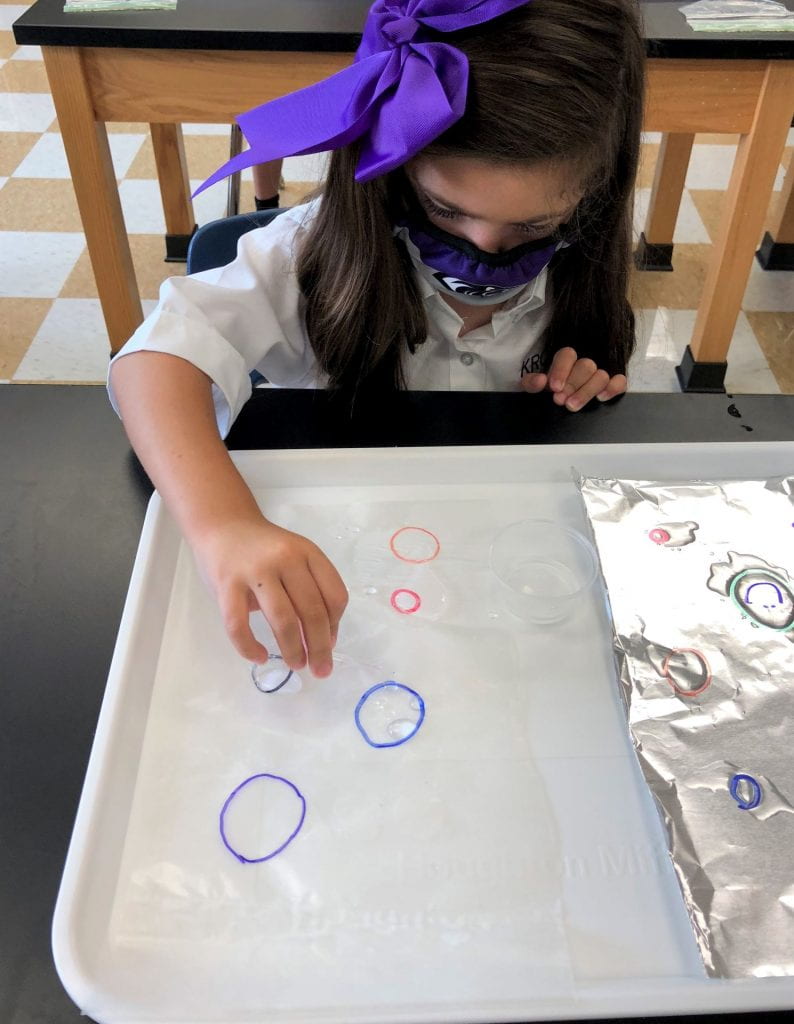
Do you have a baster or eye dropper at home? They make great bath toys and work just like a pipette!
